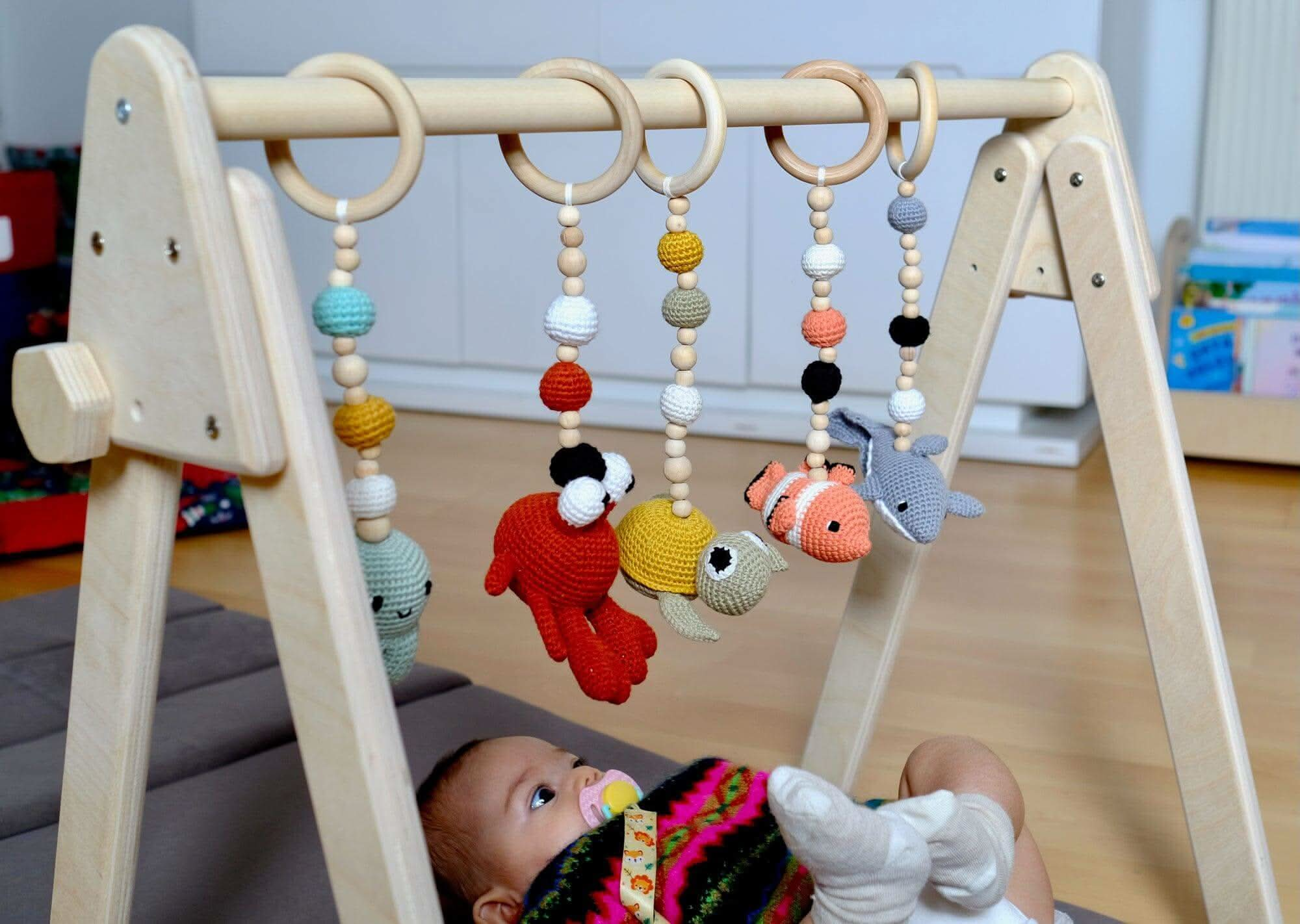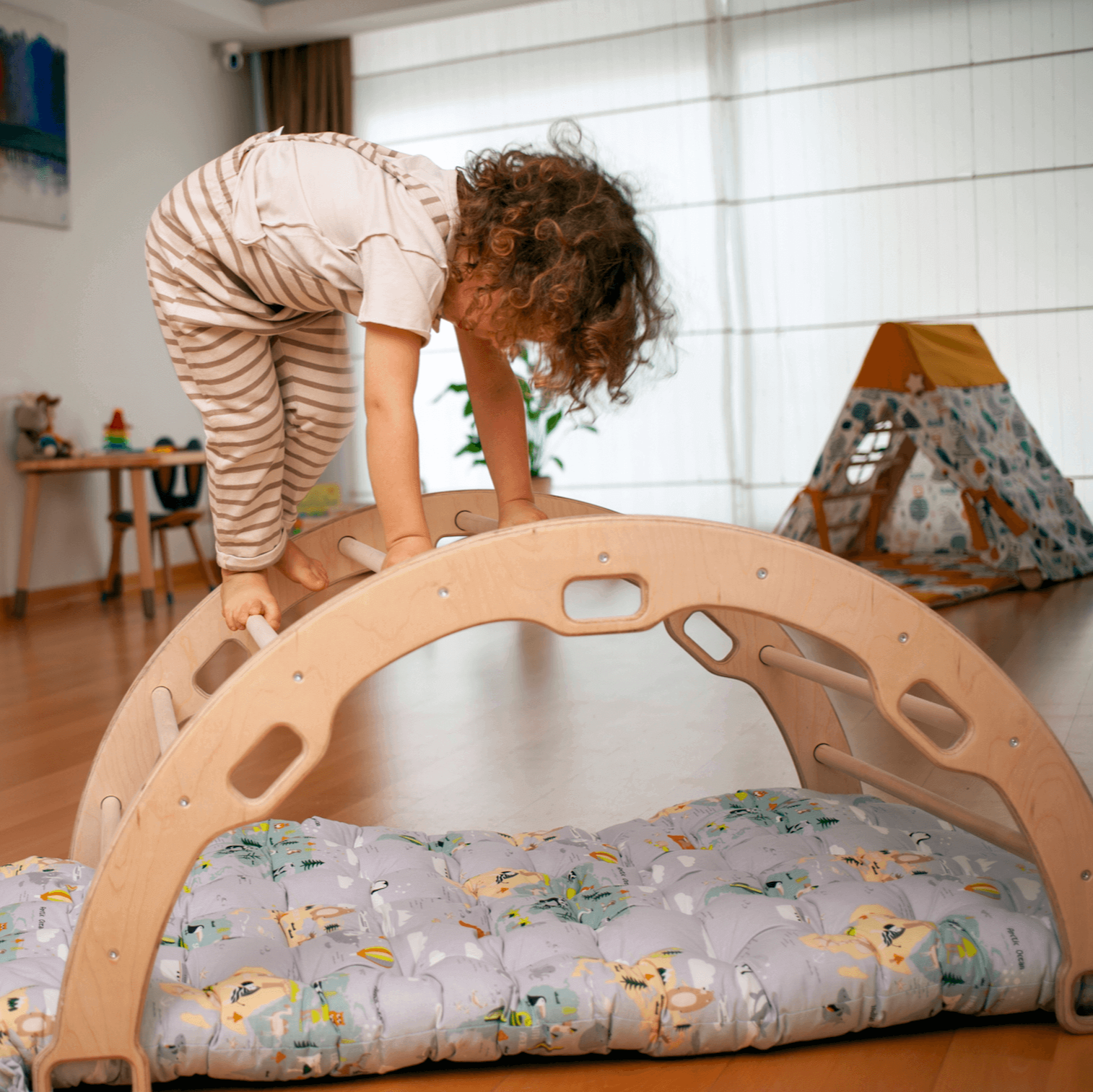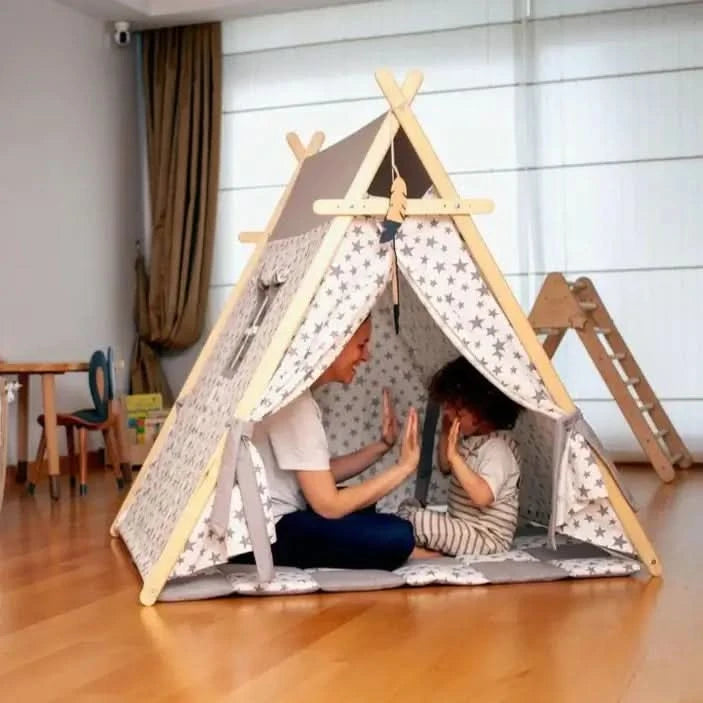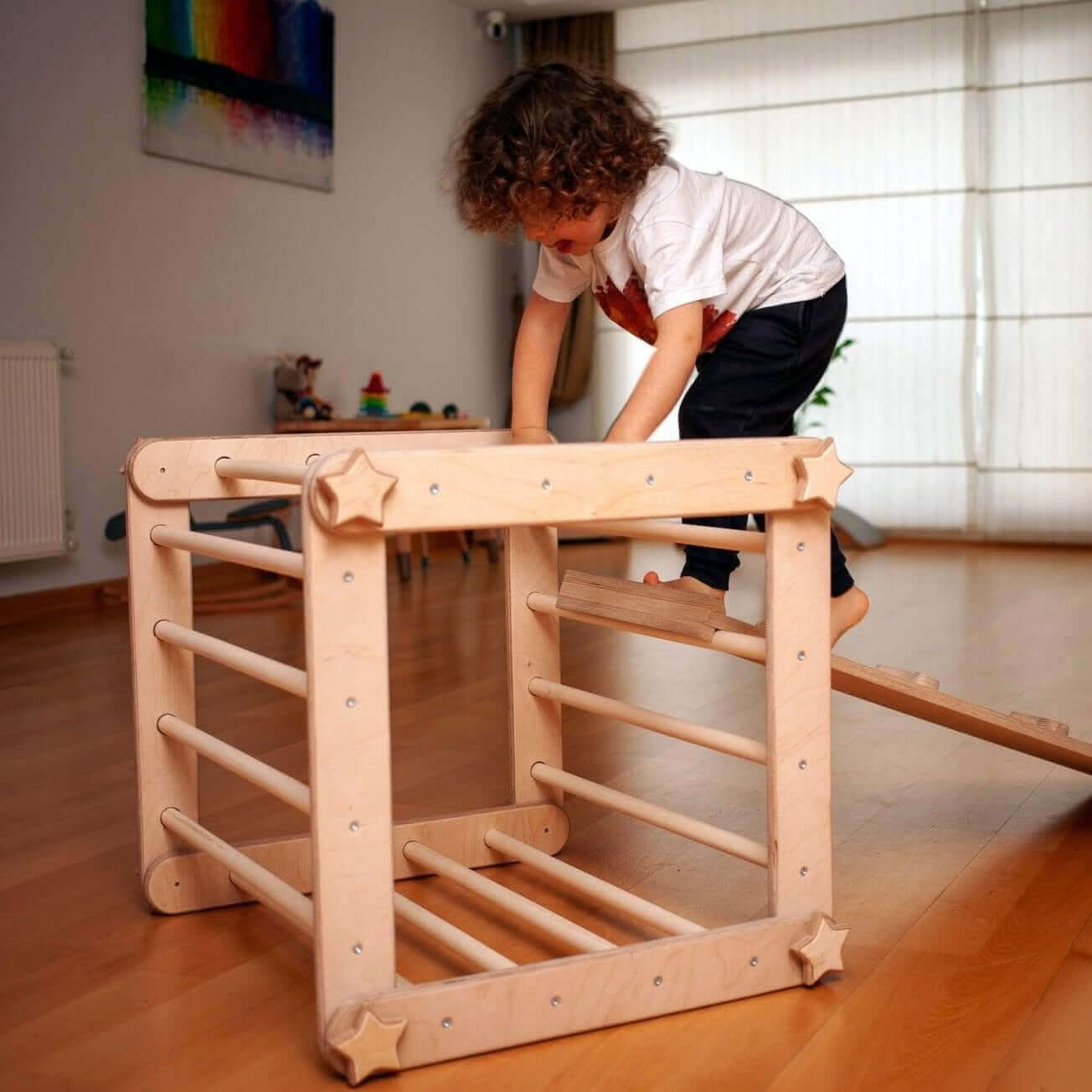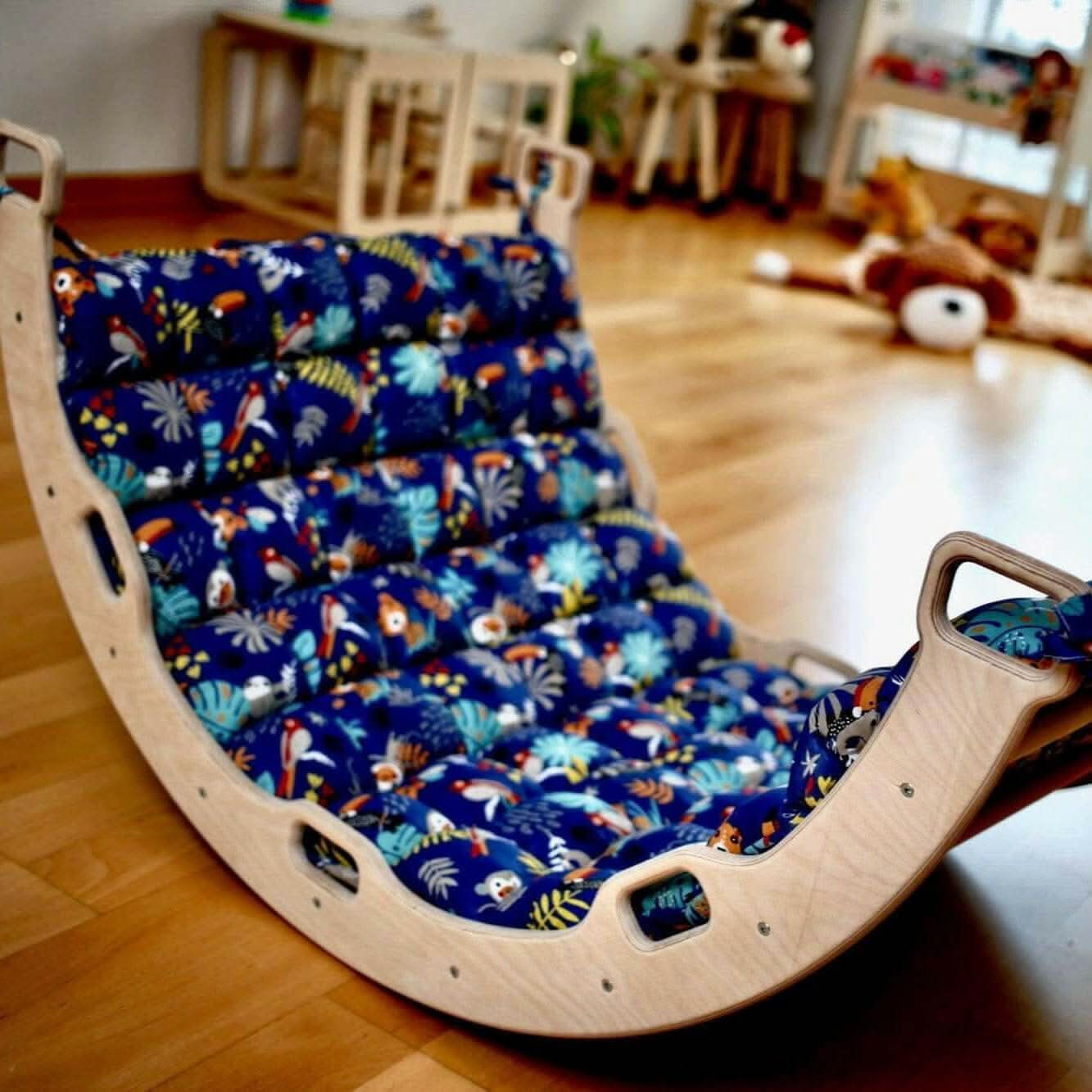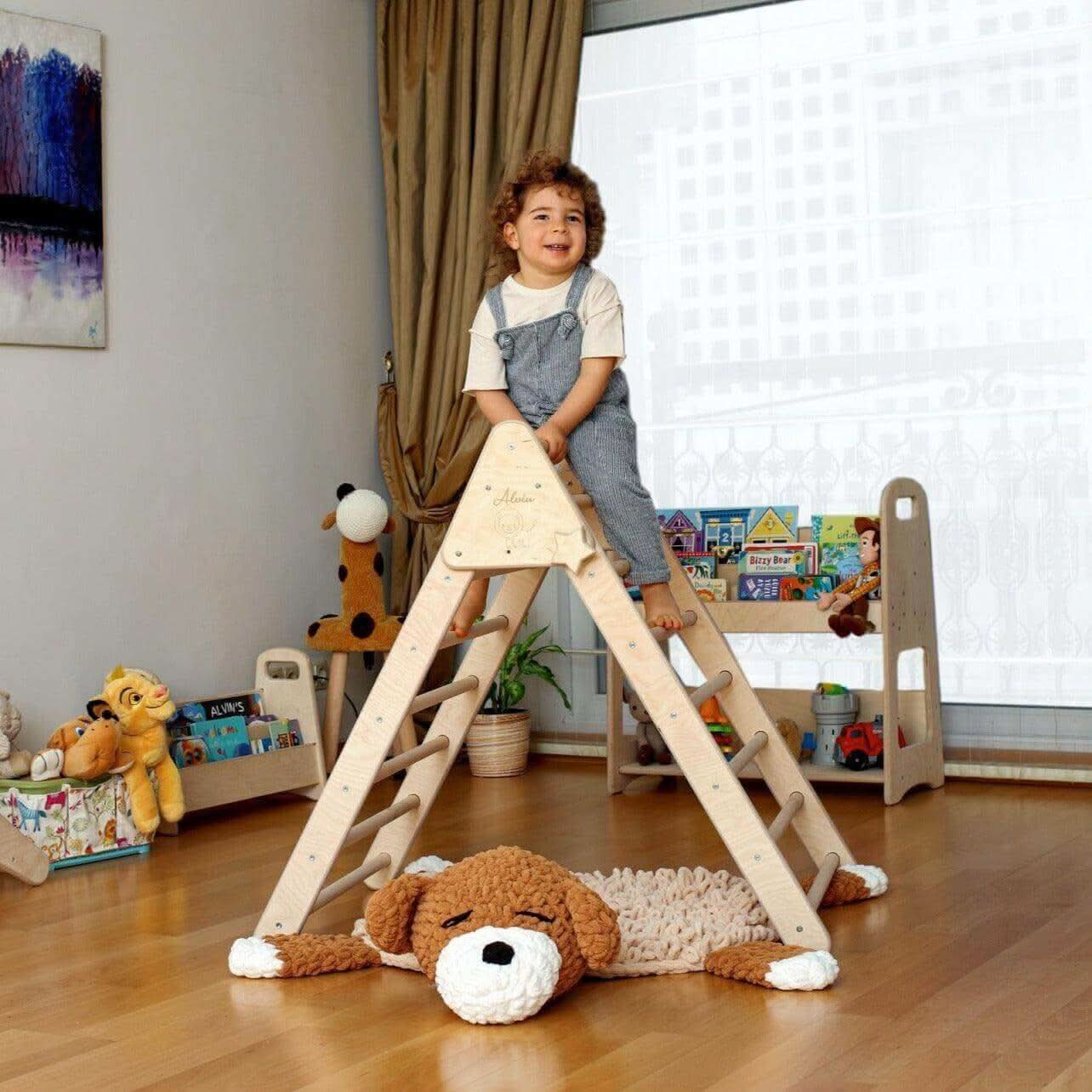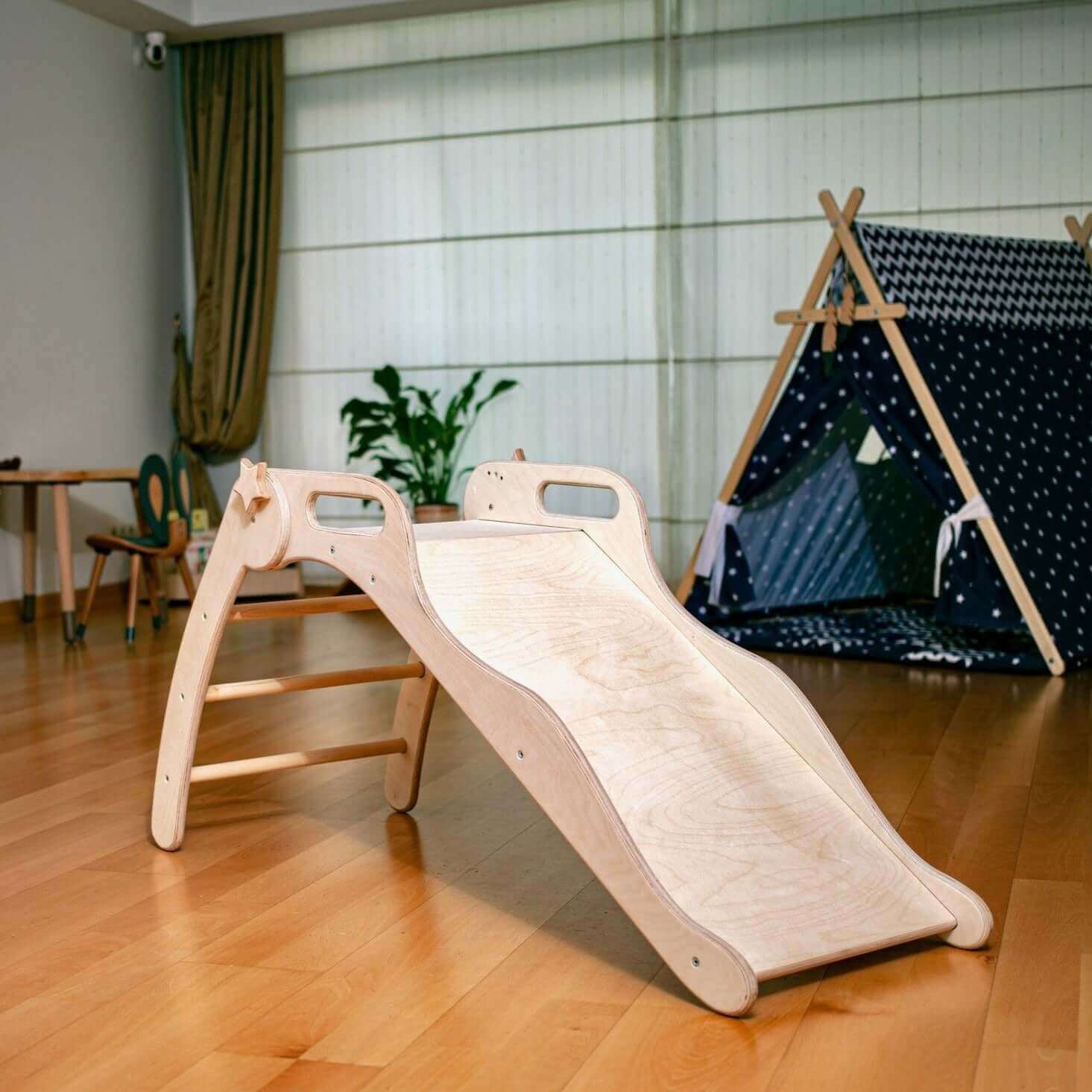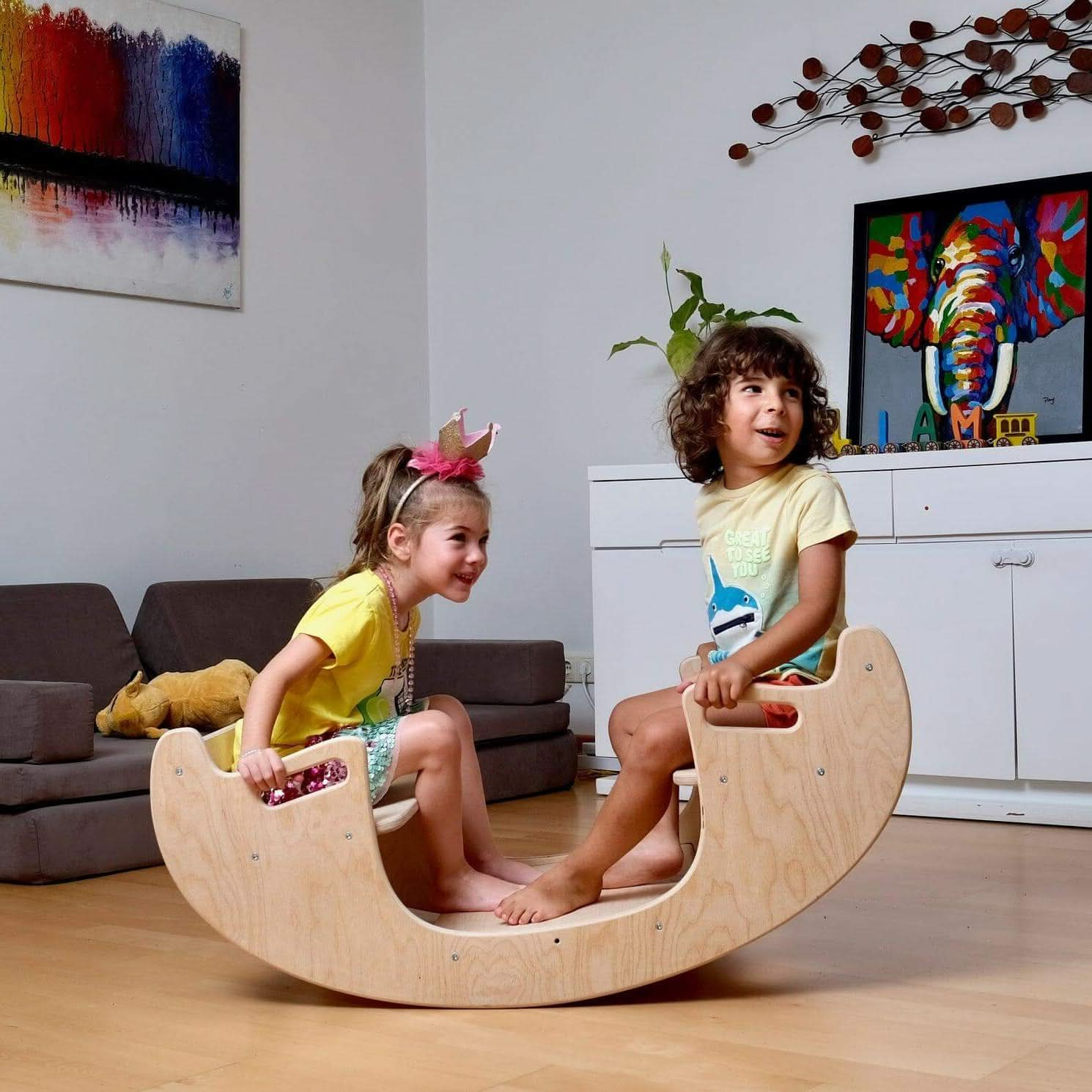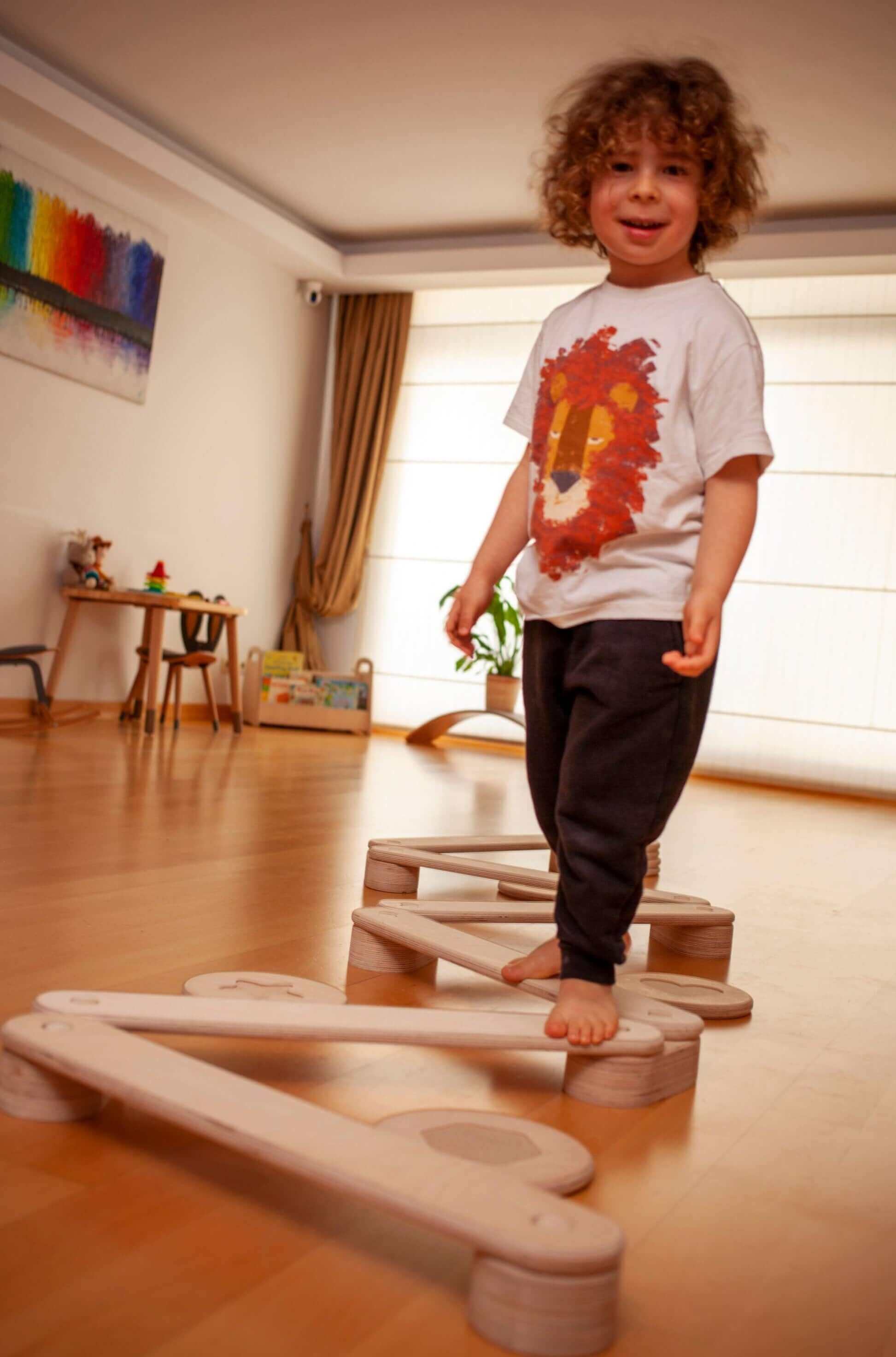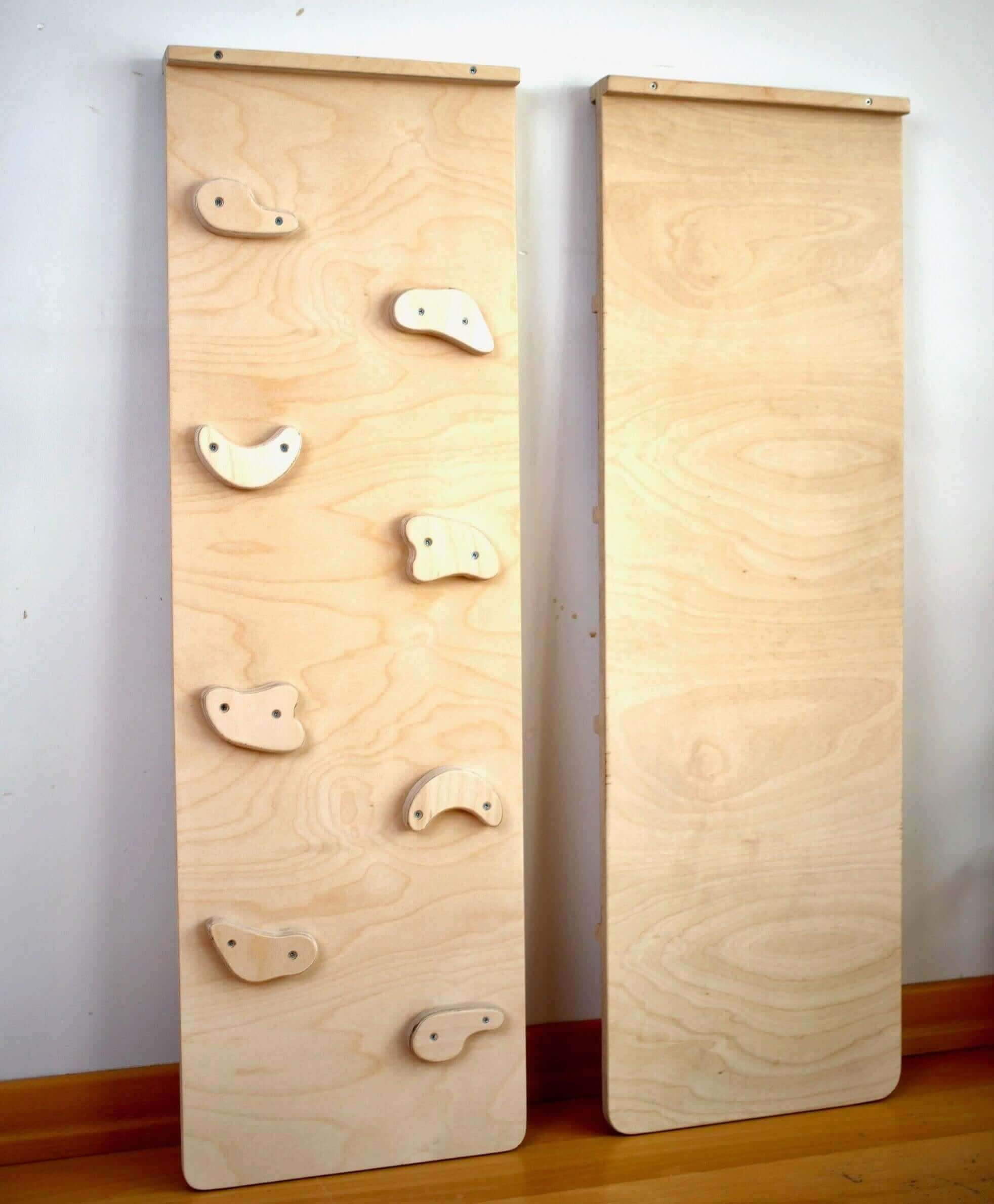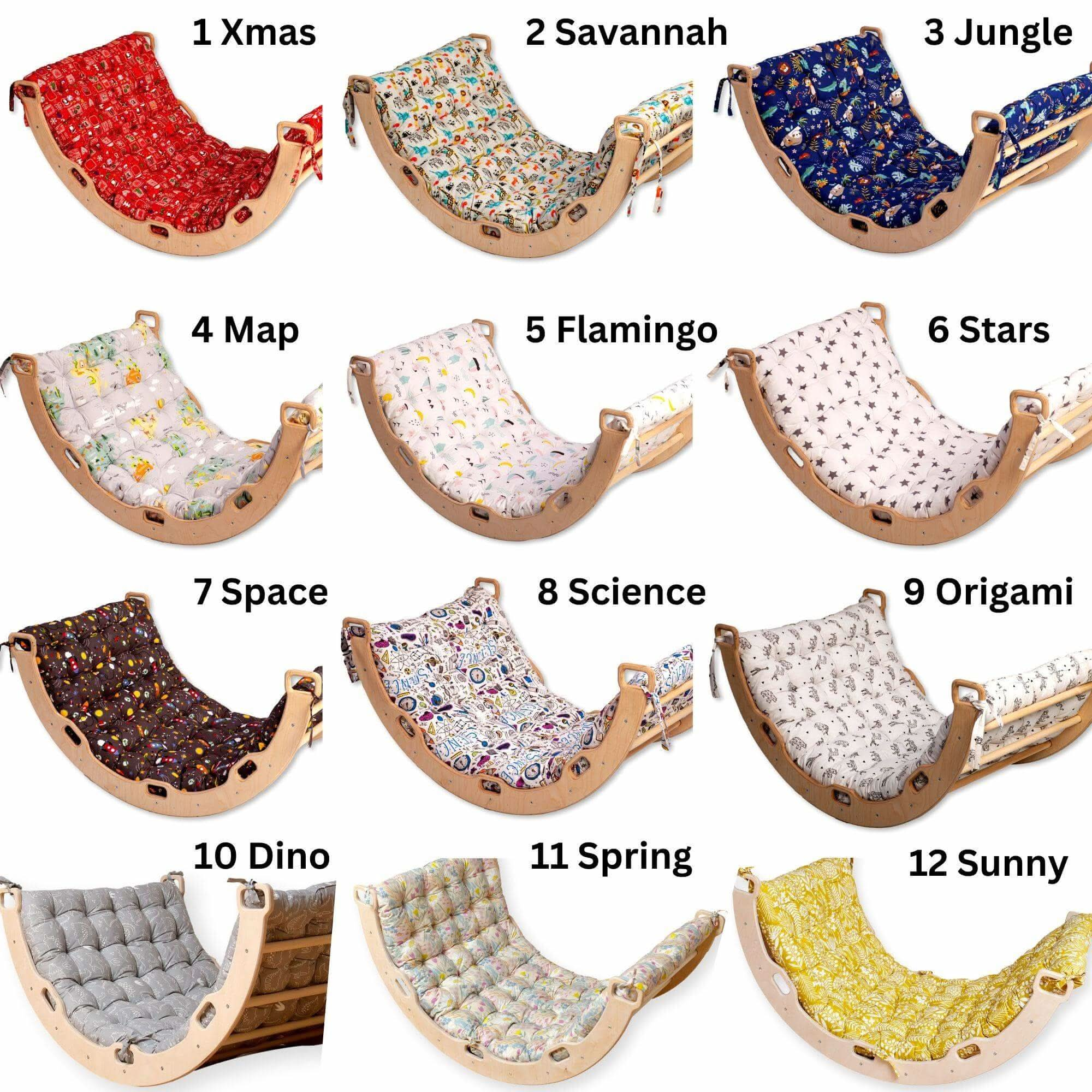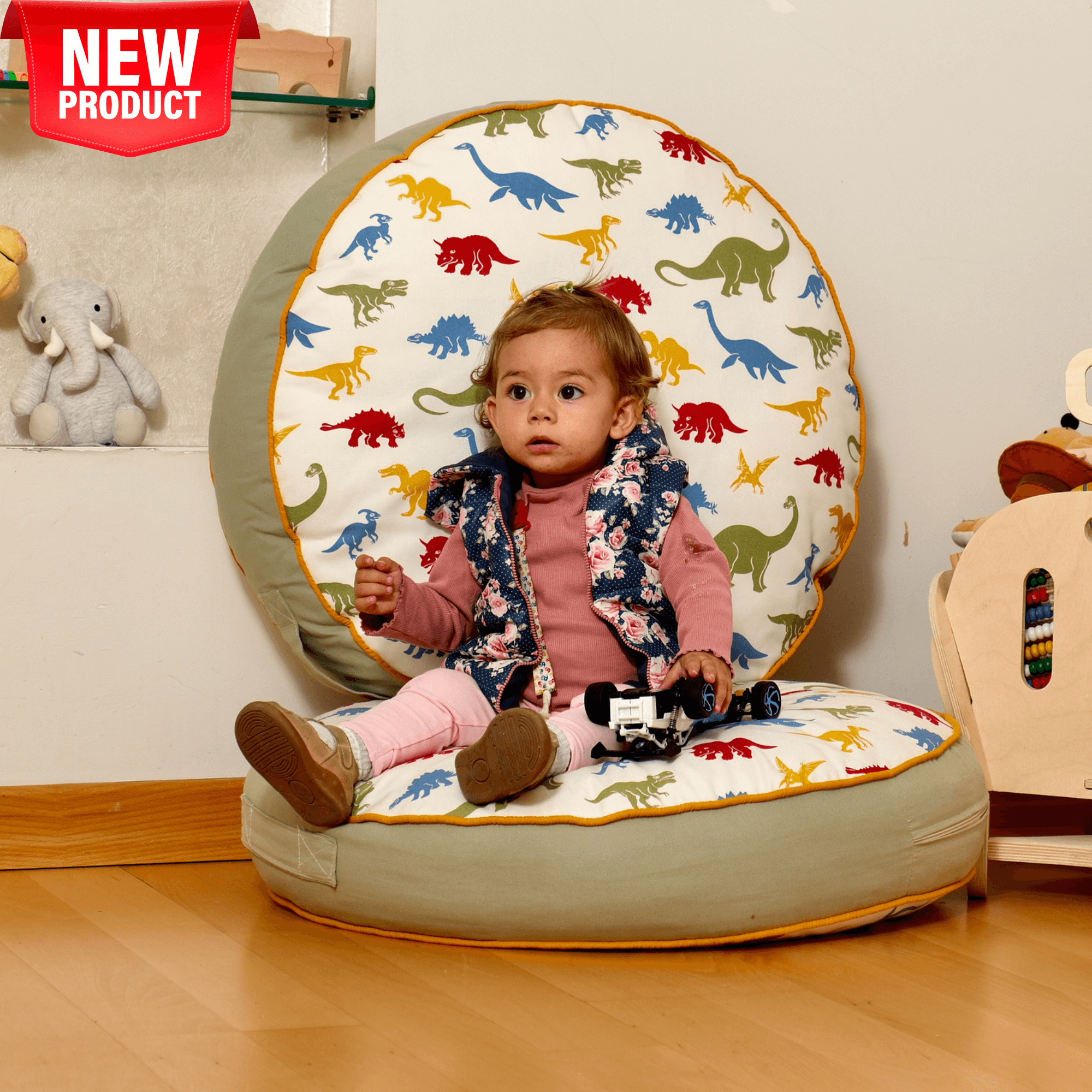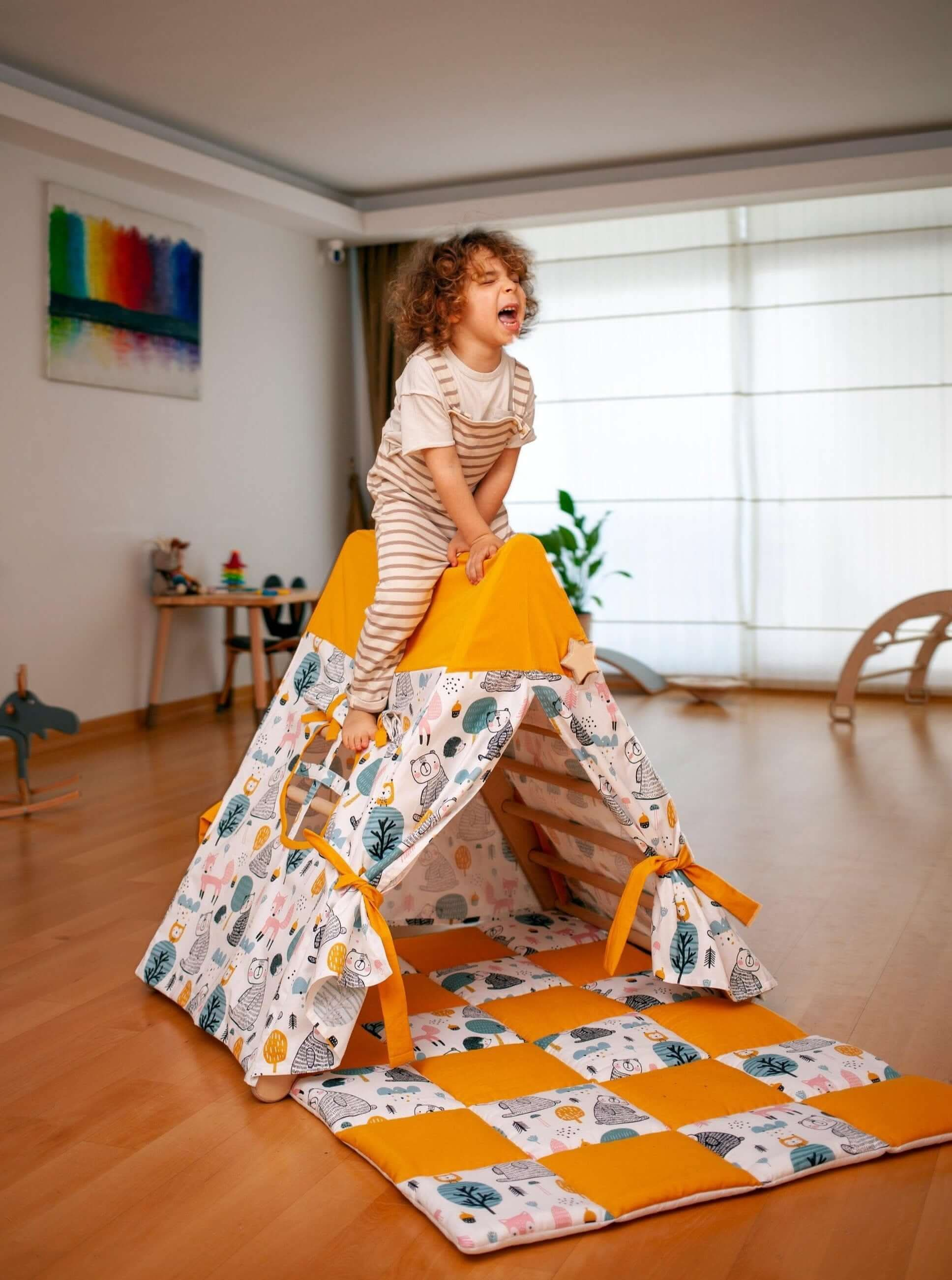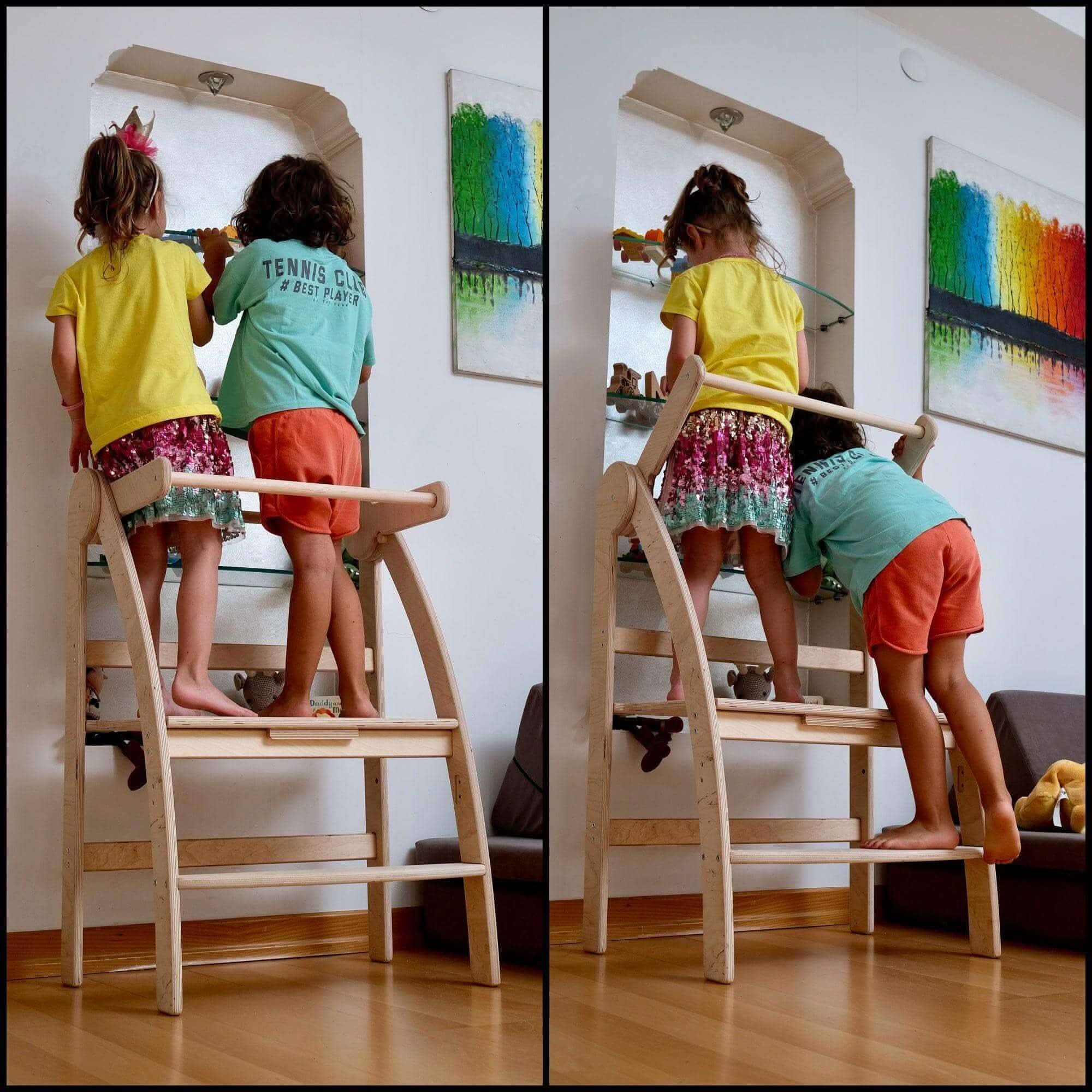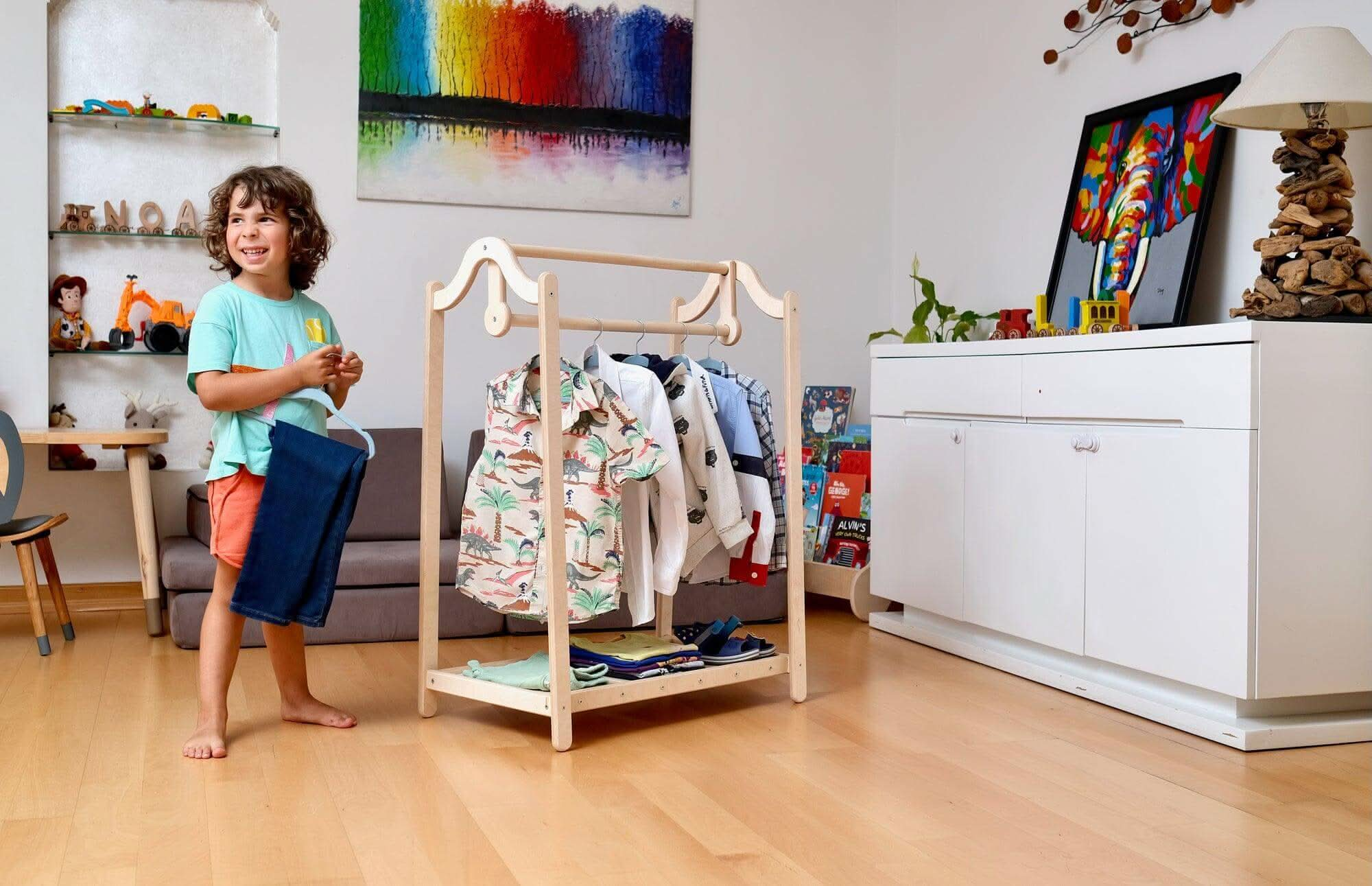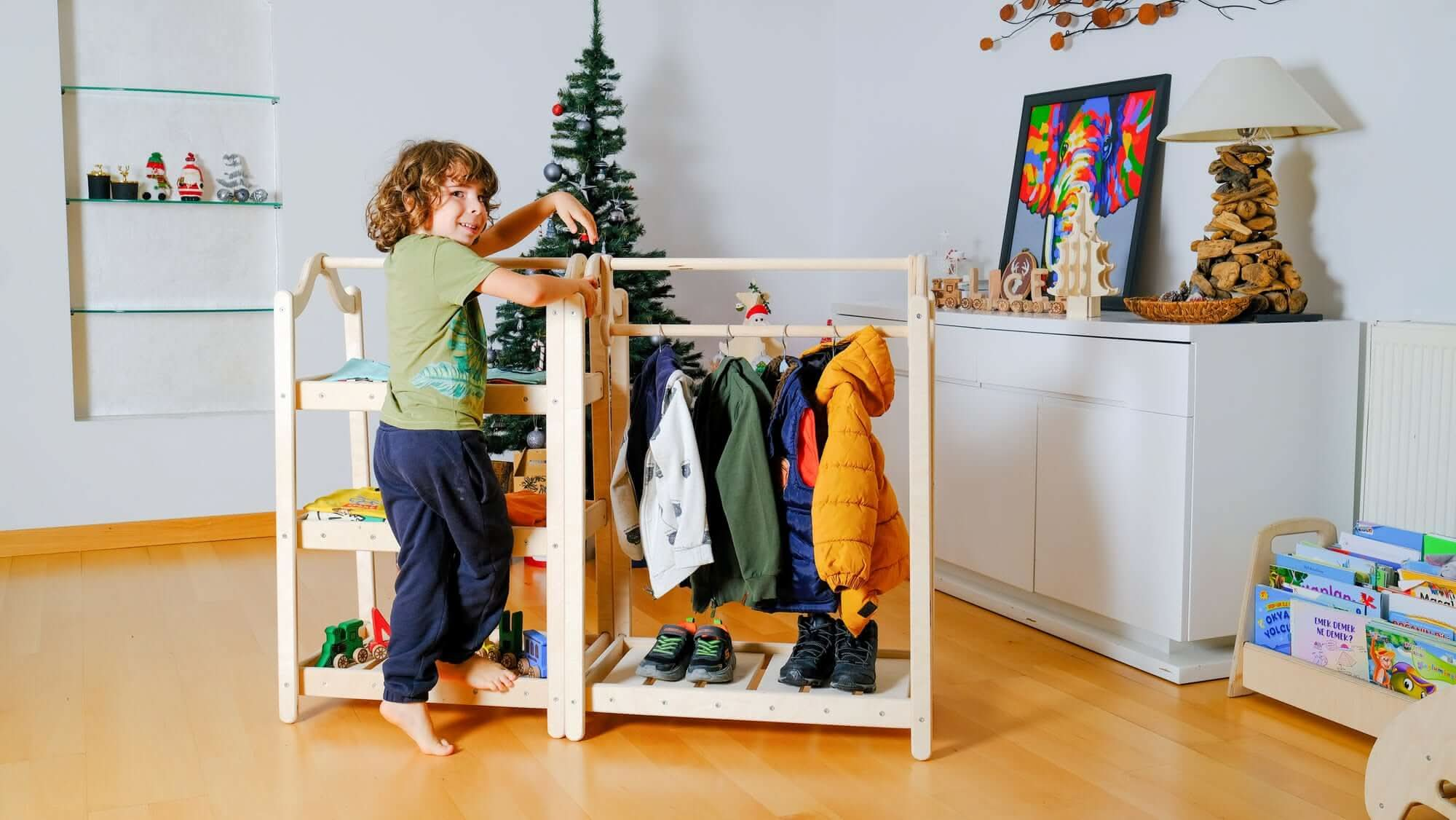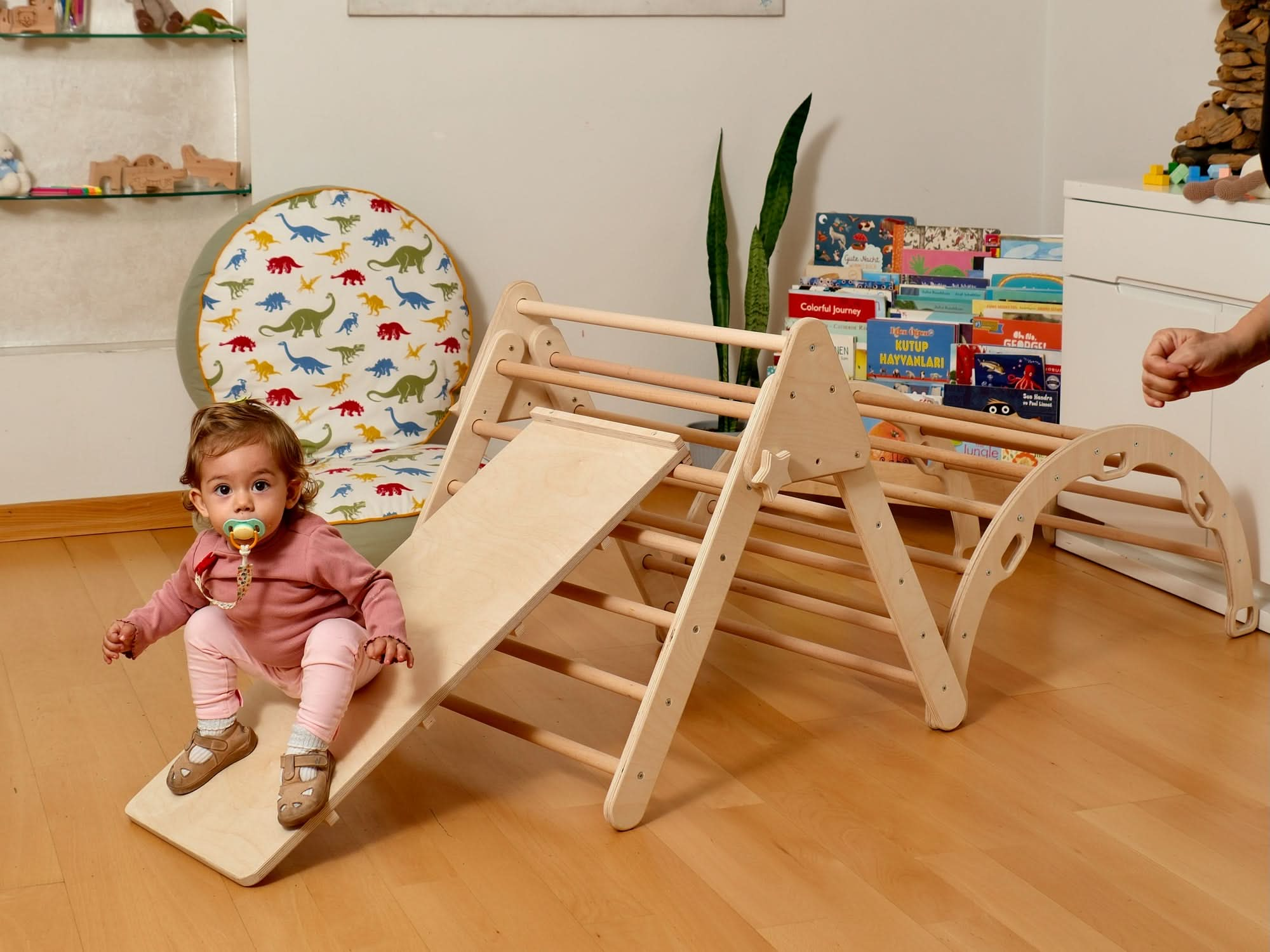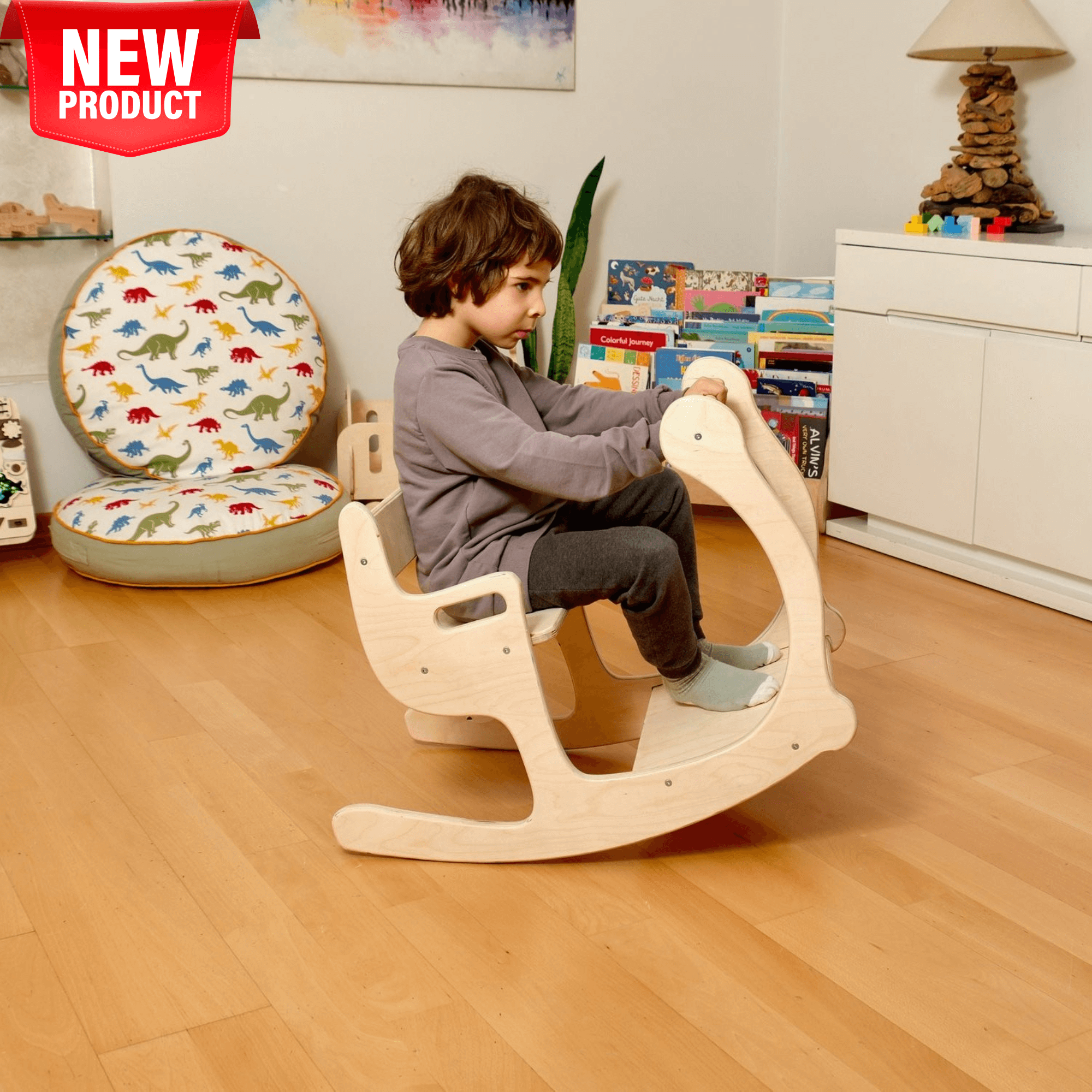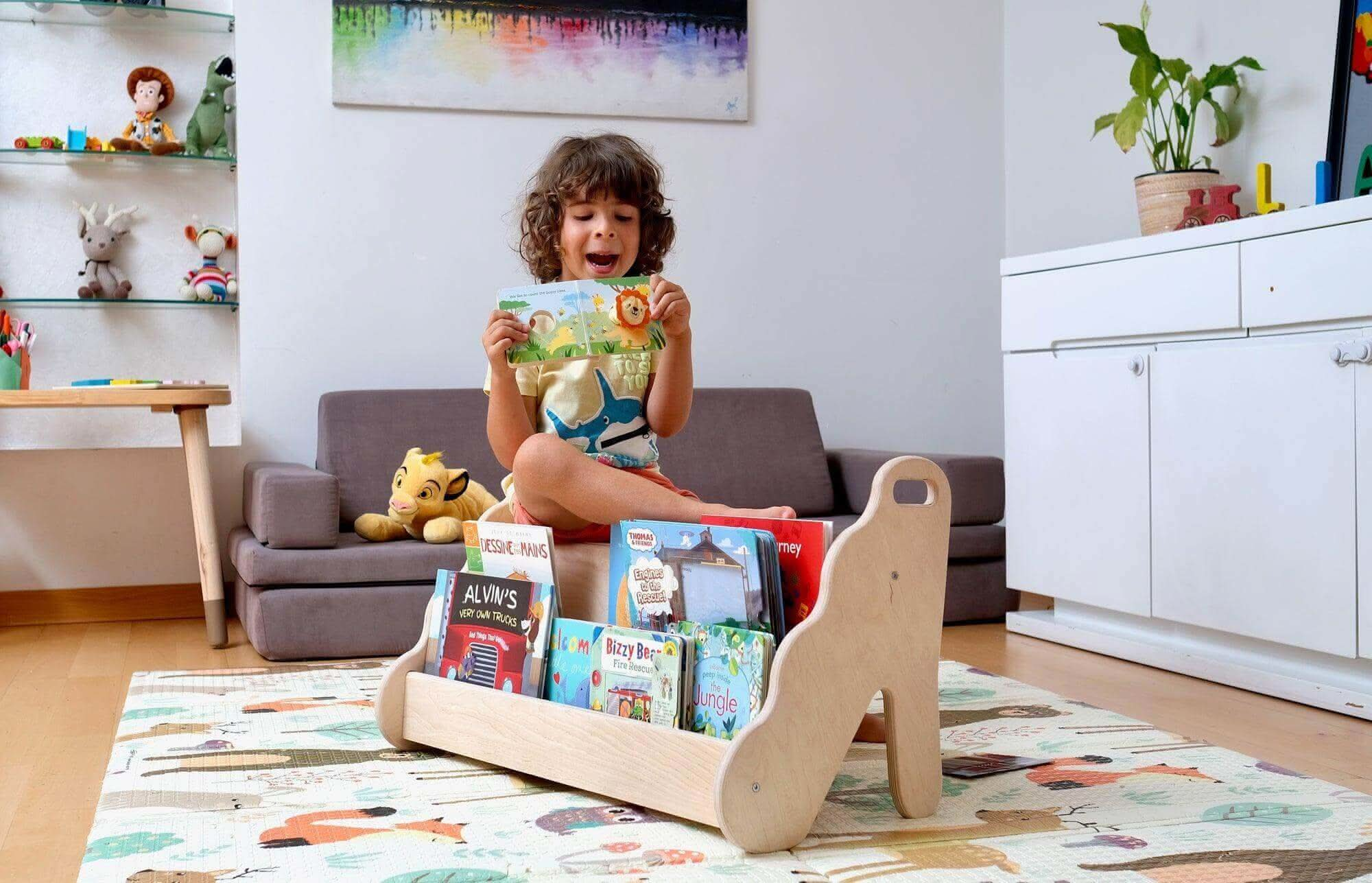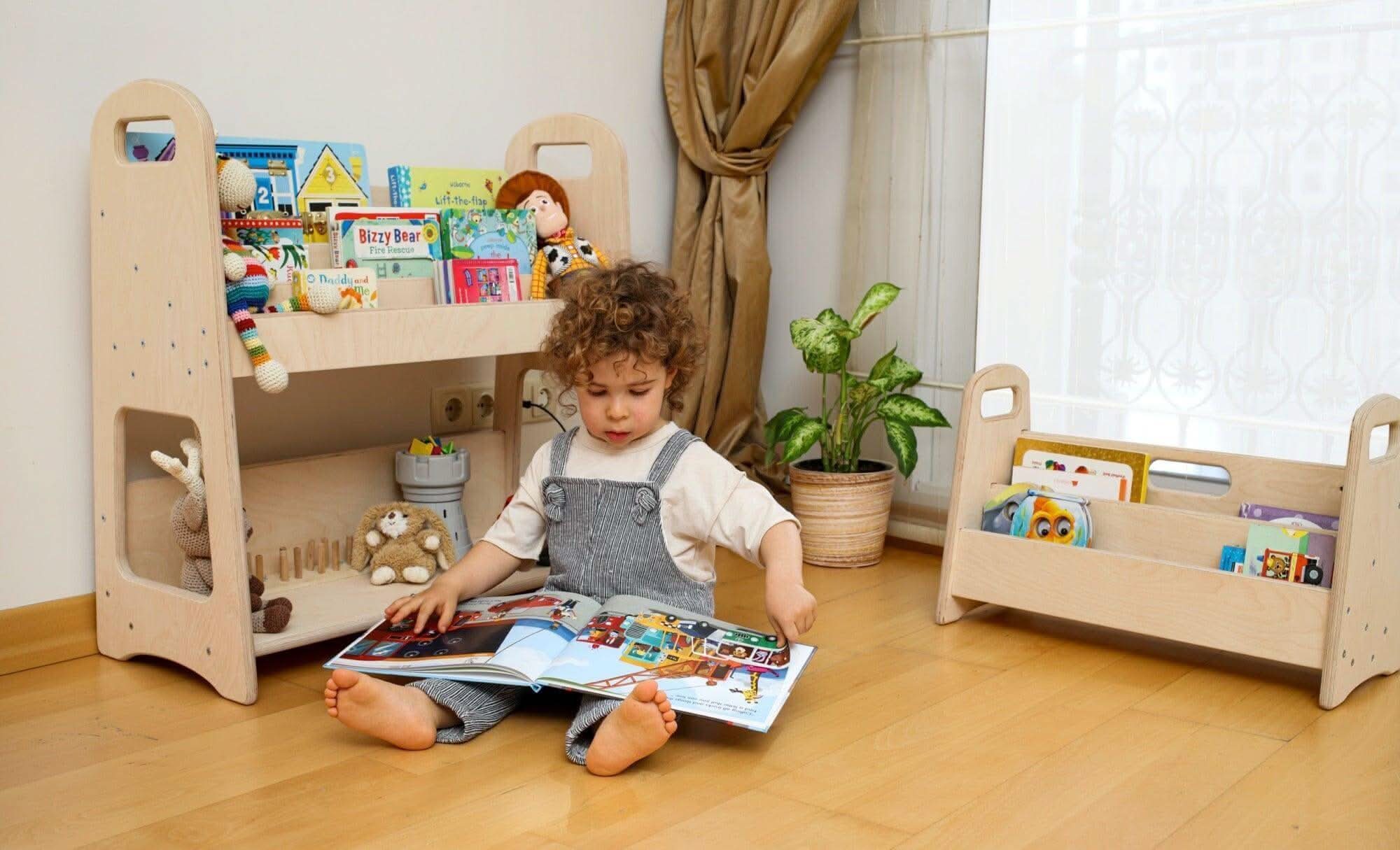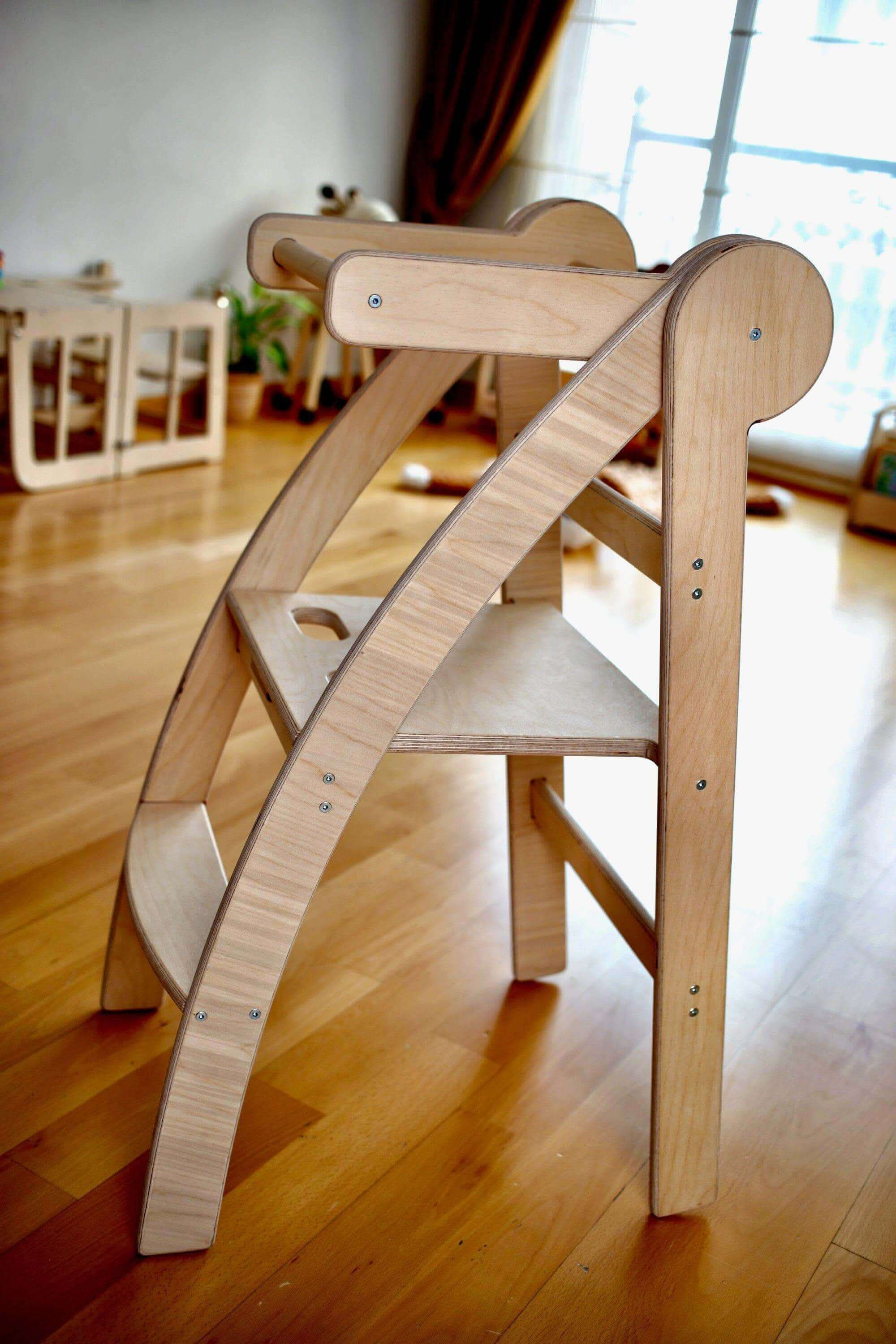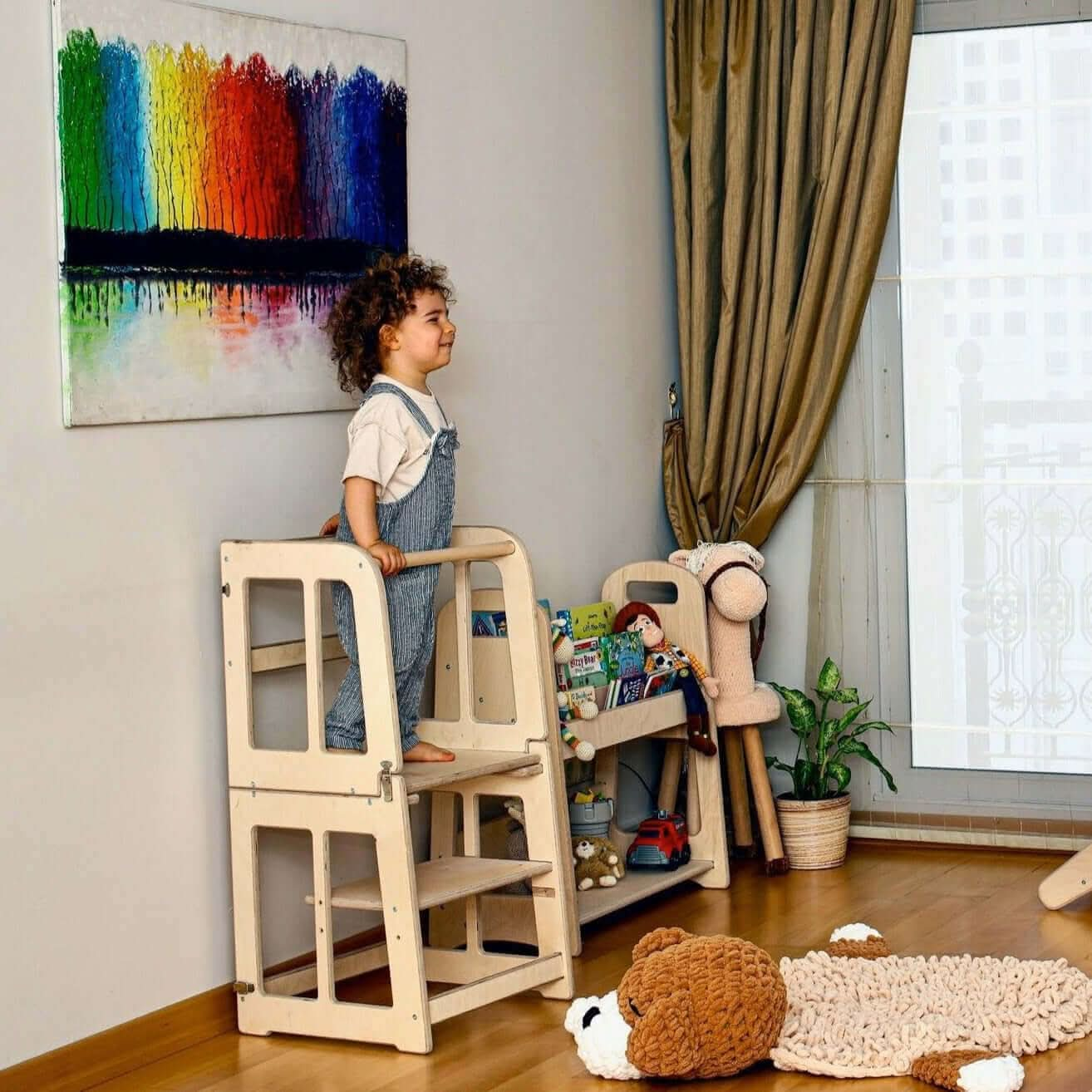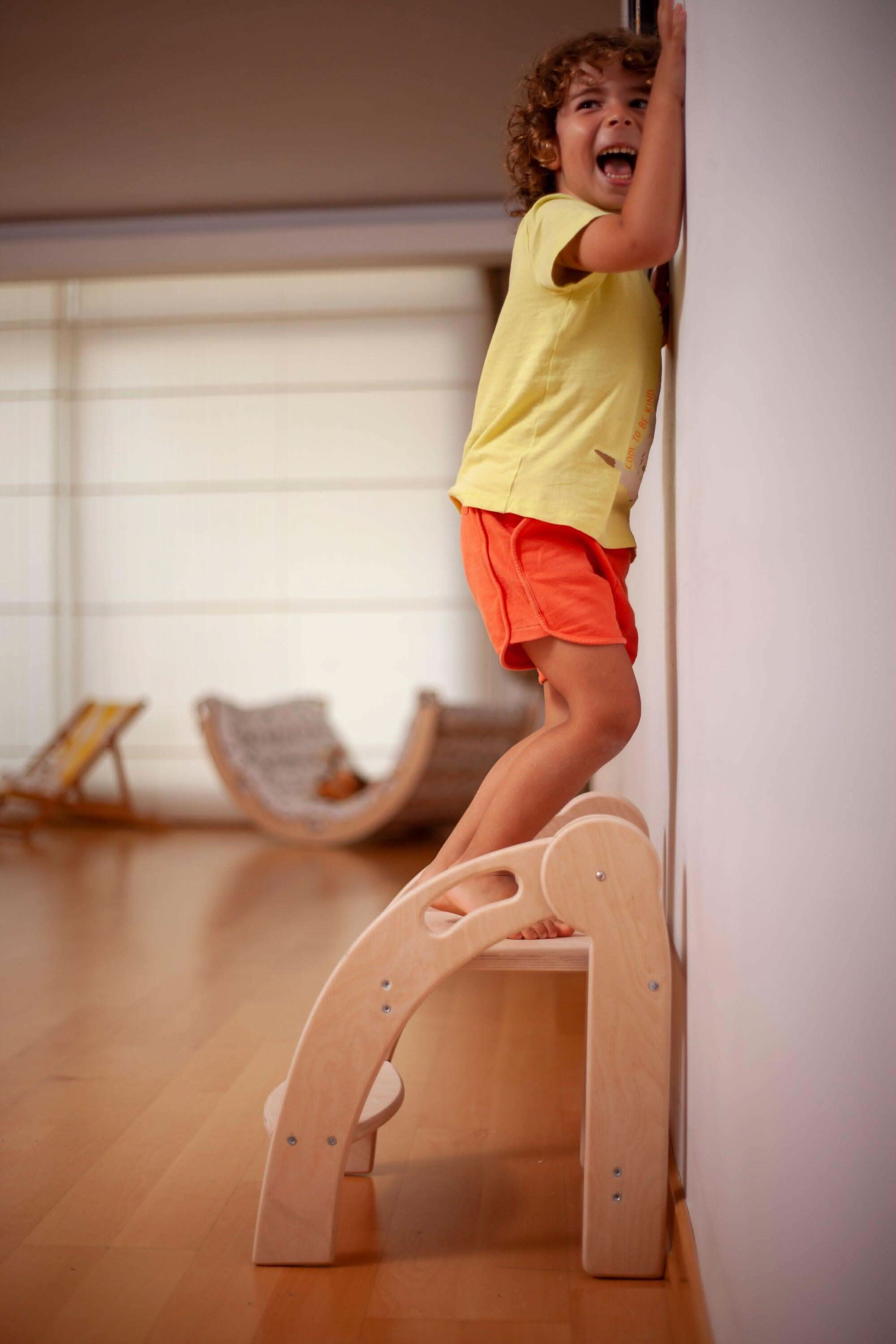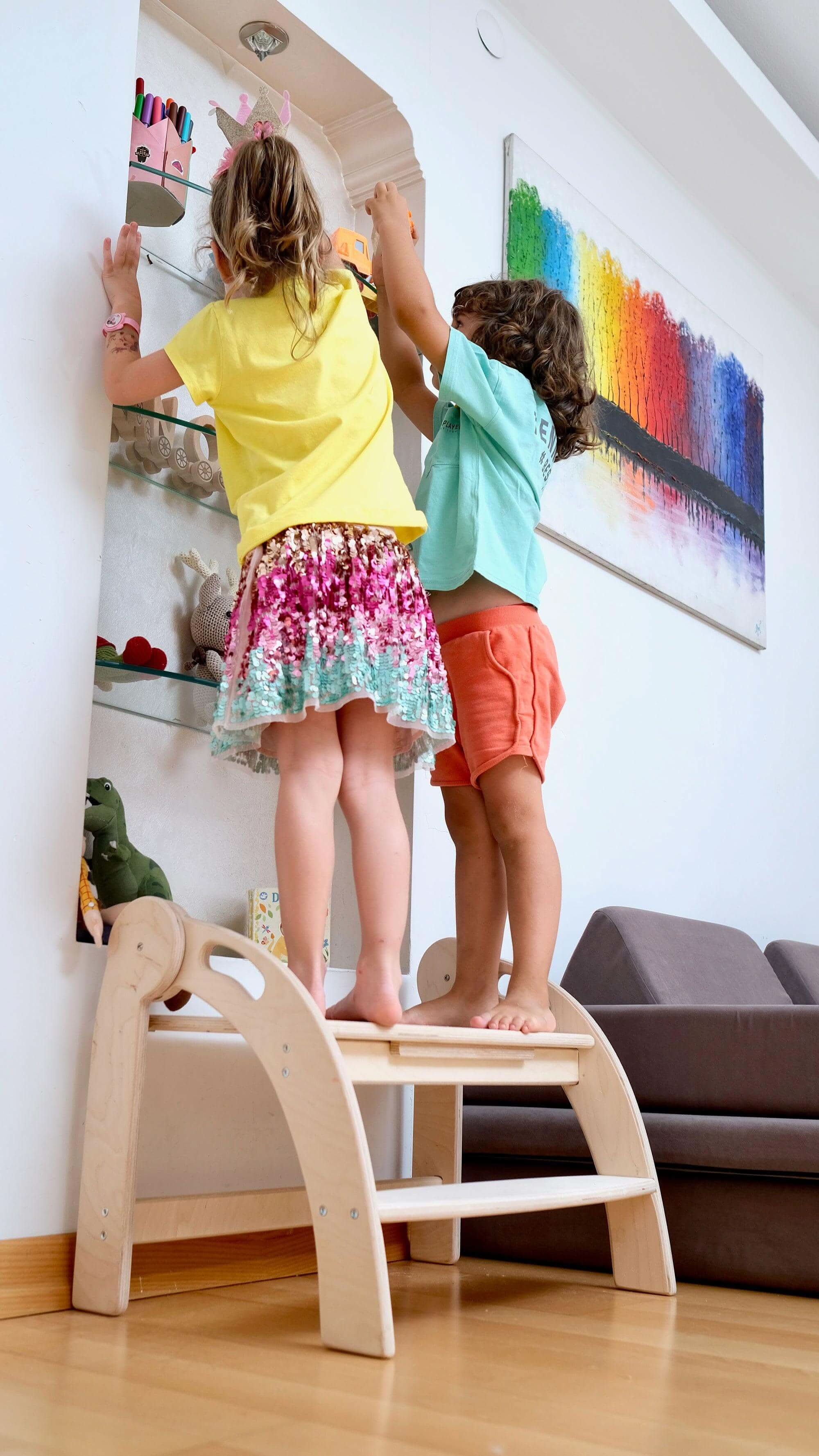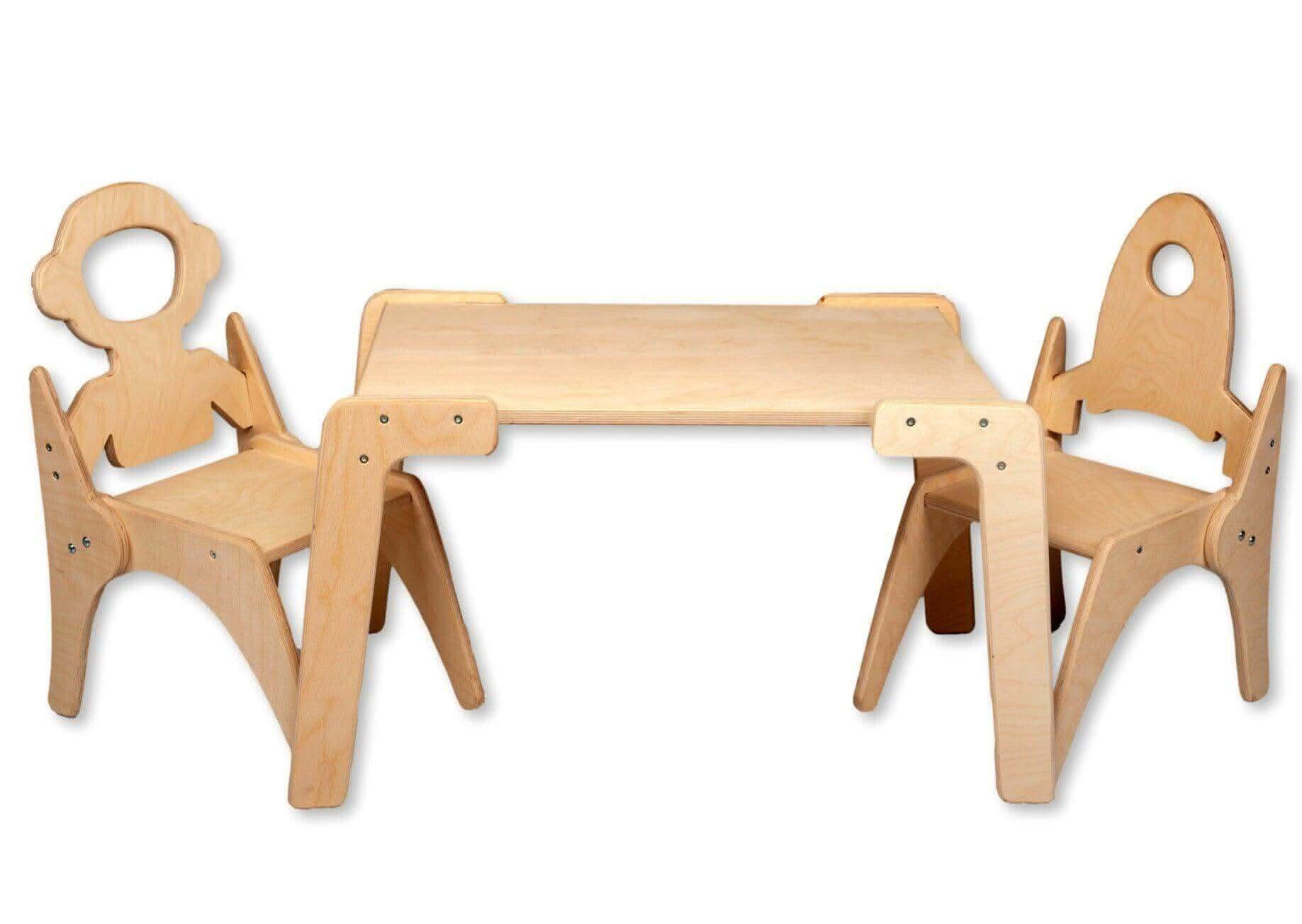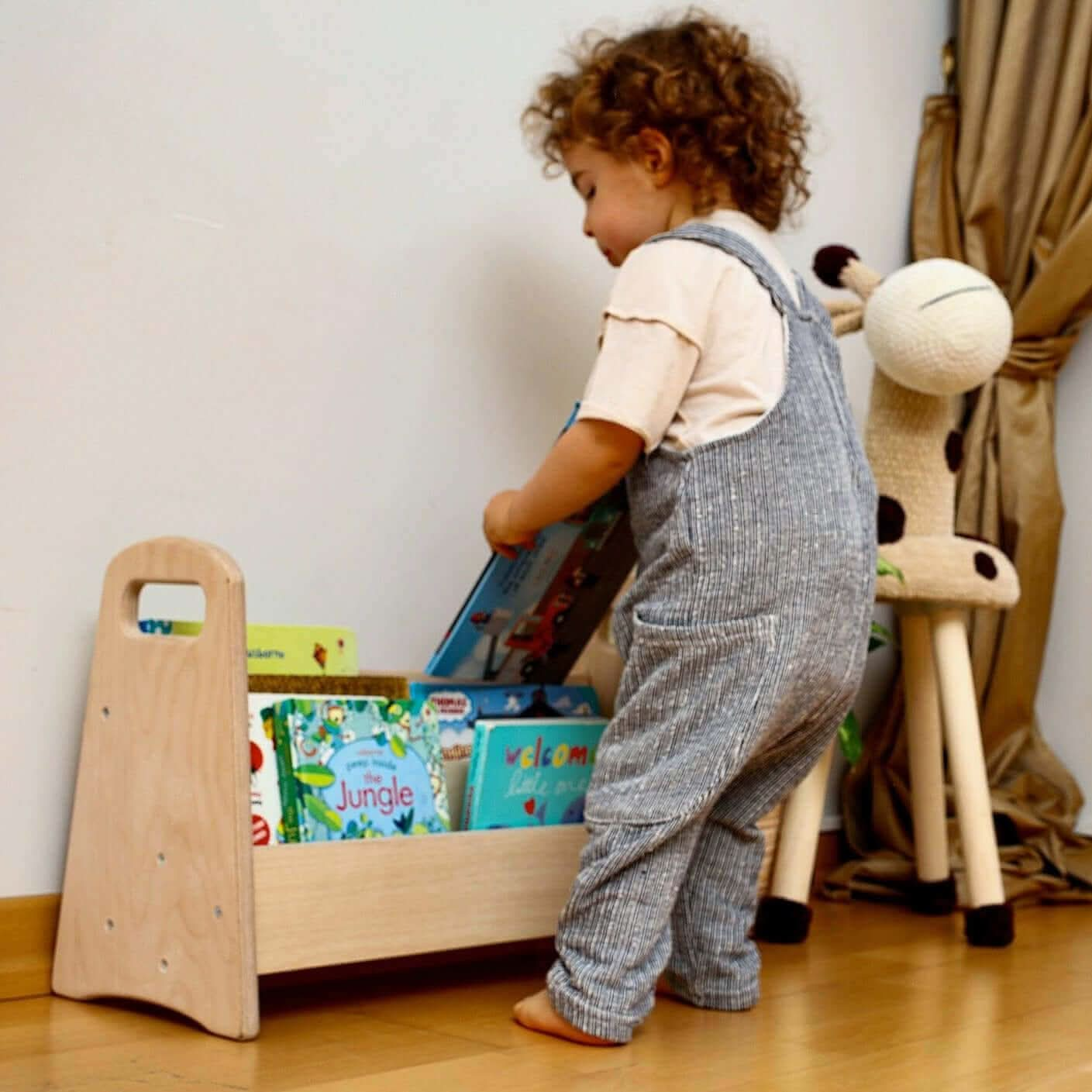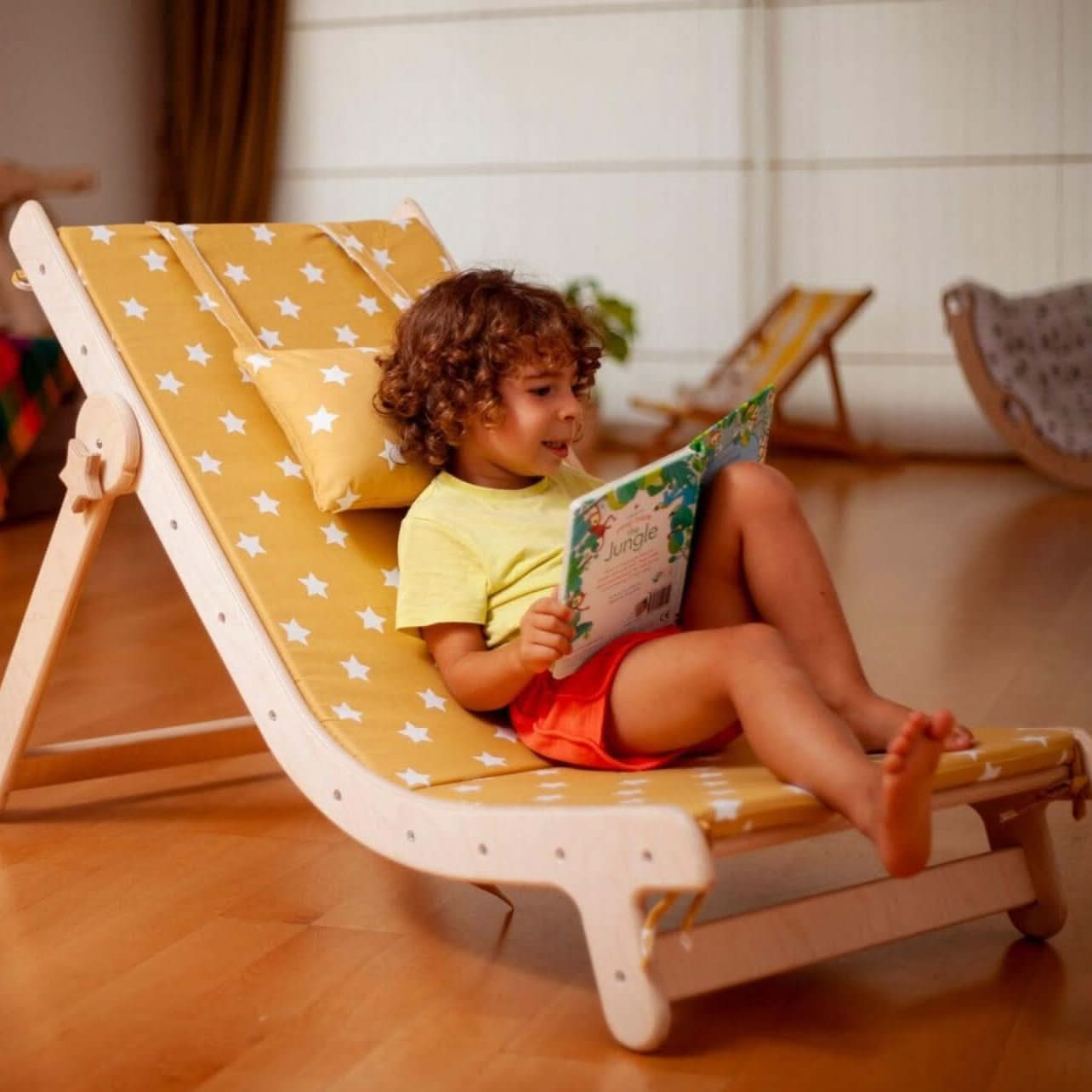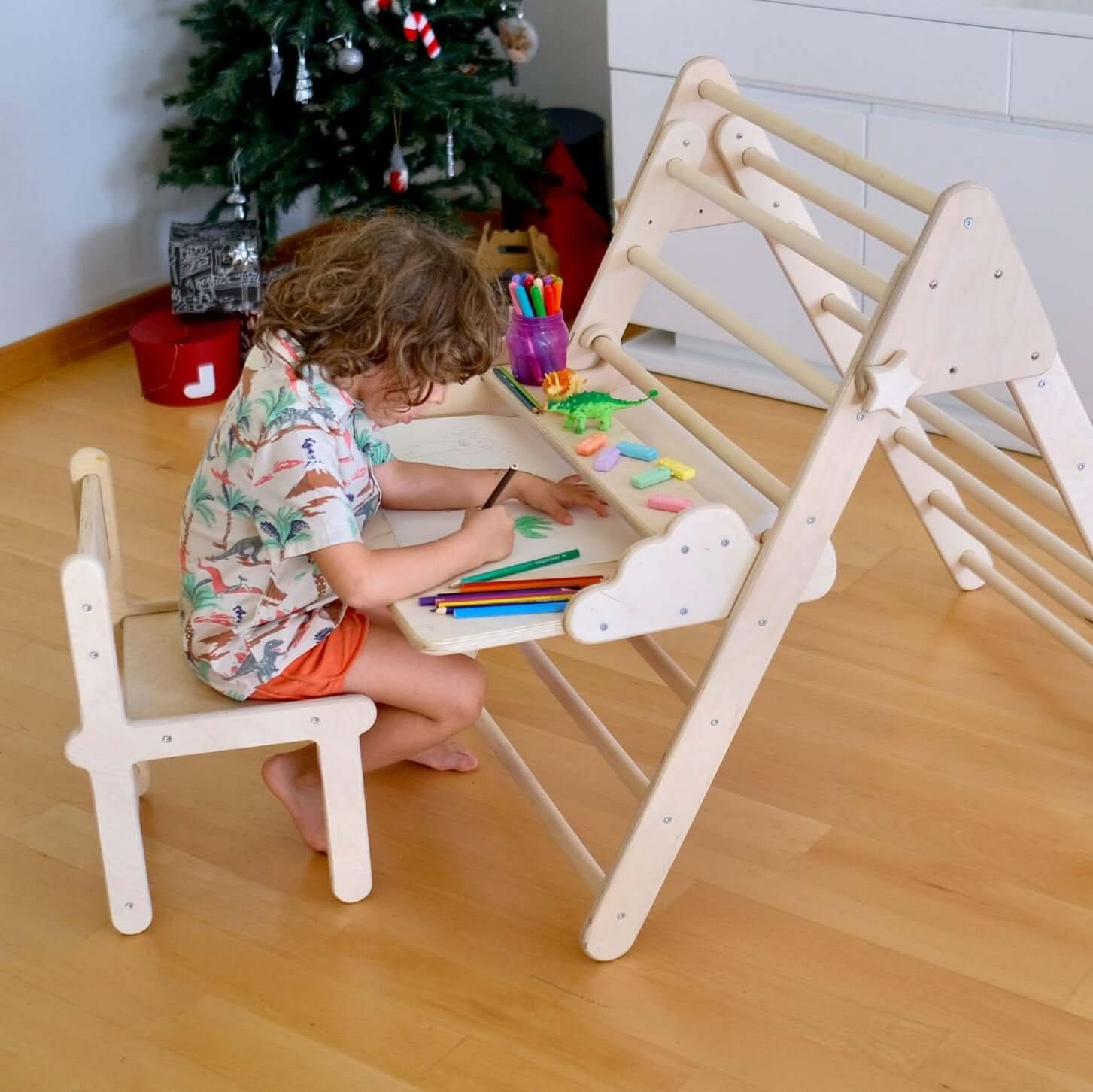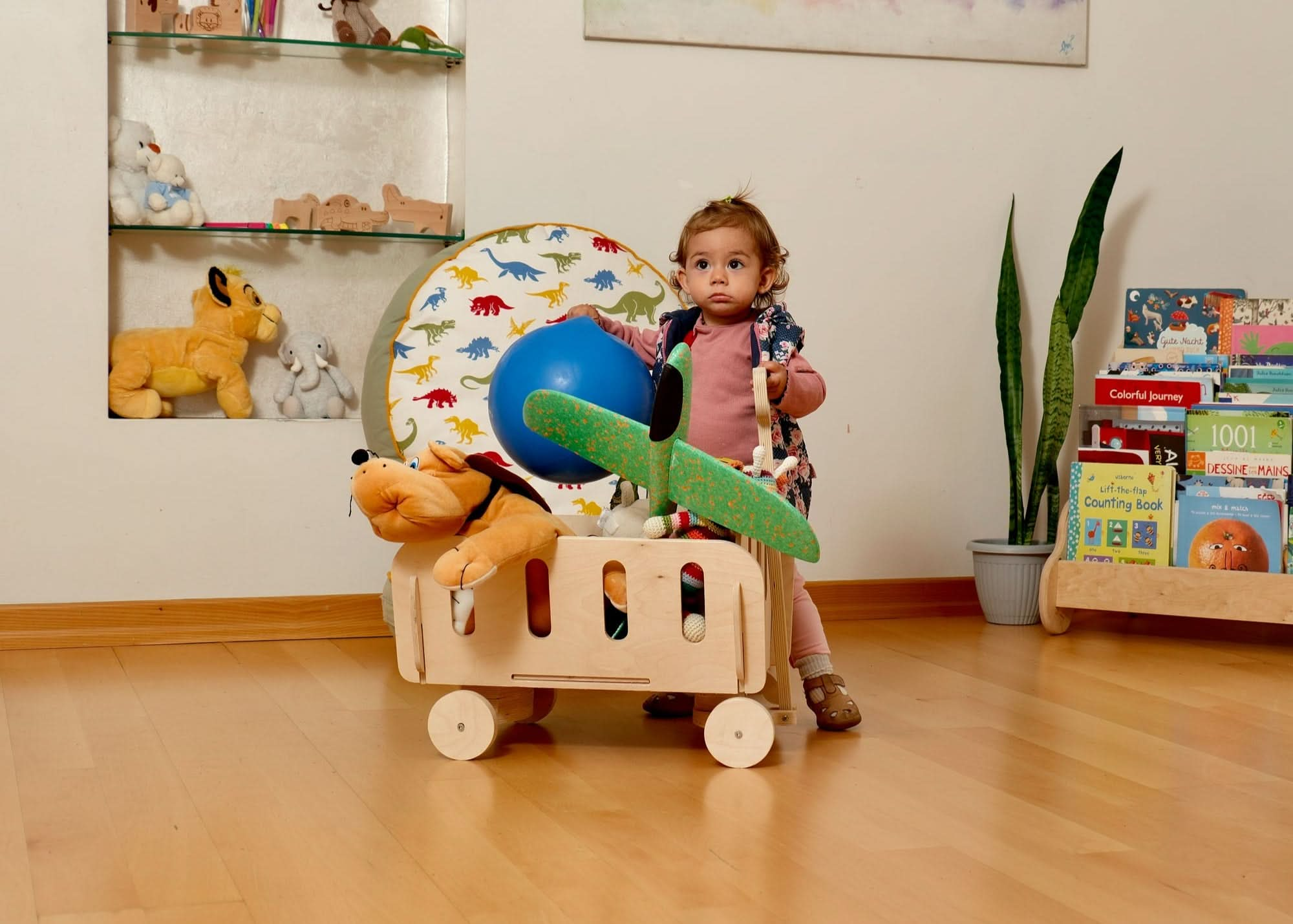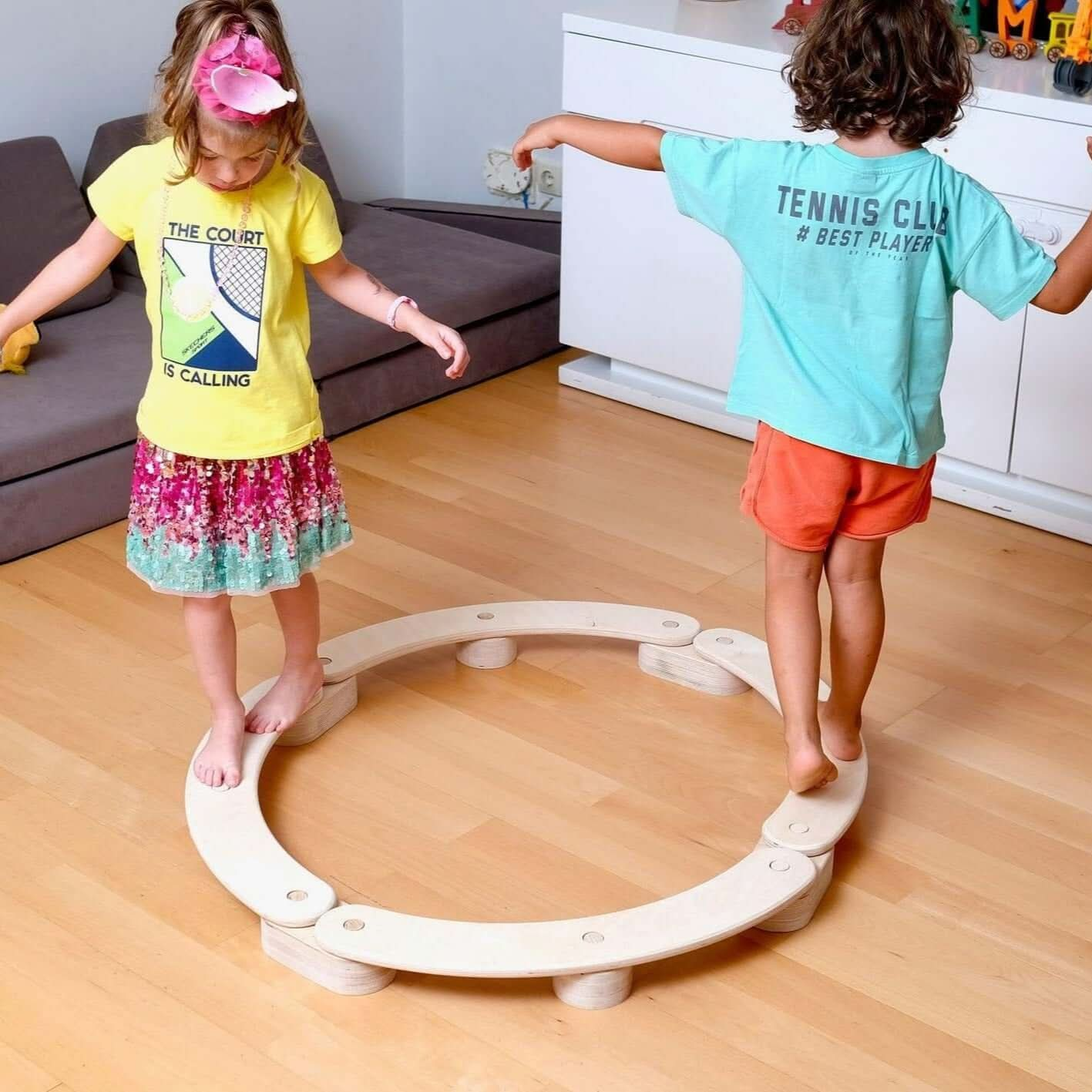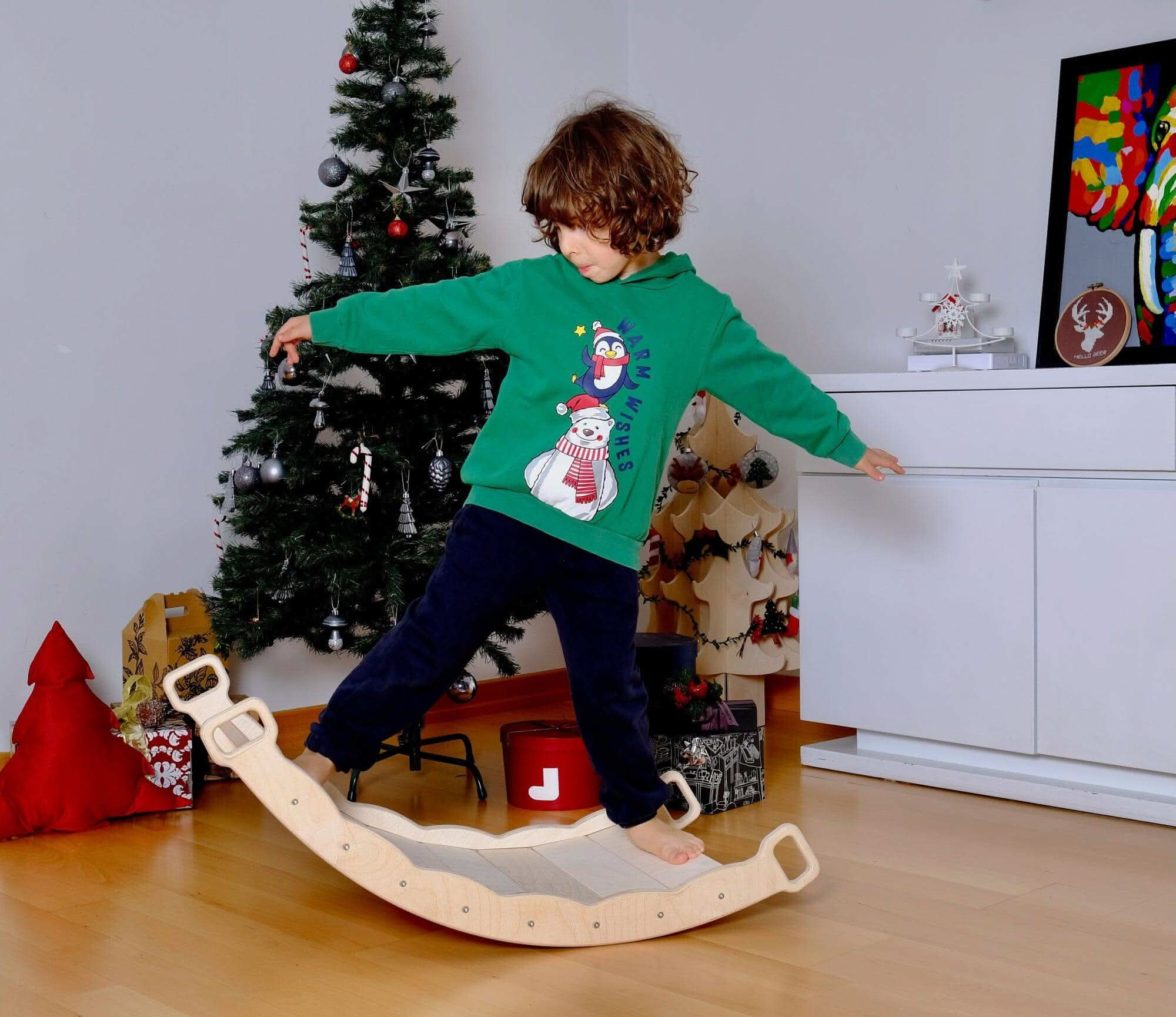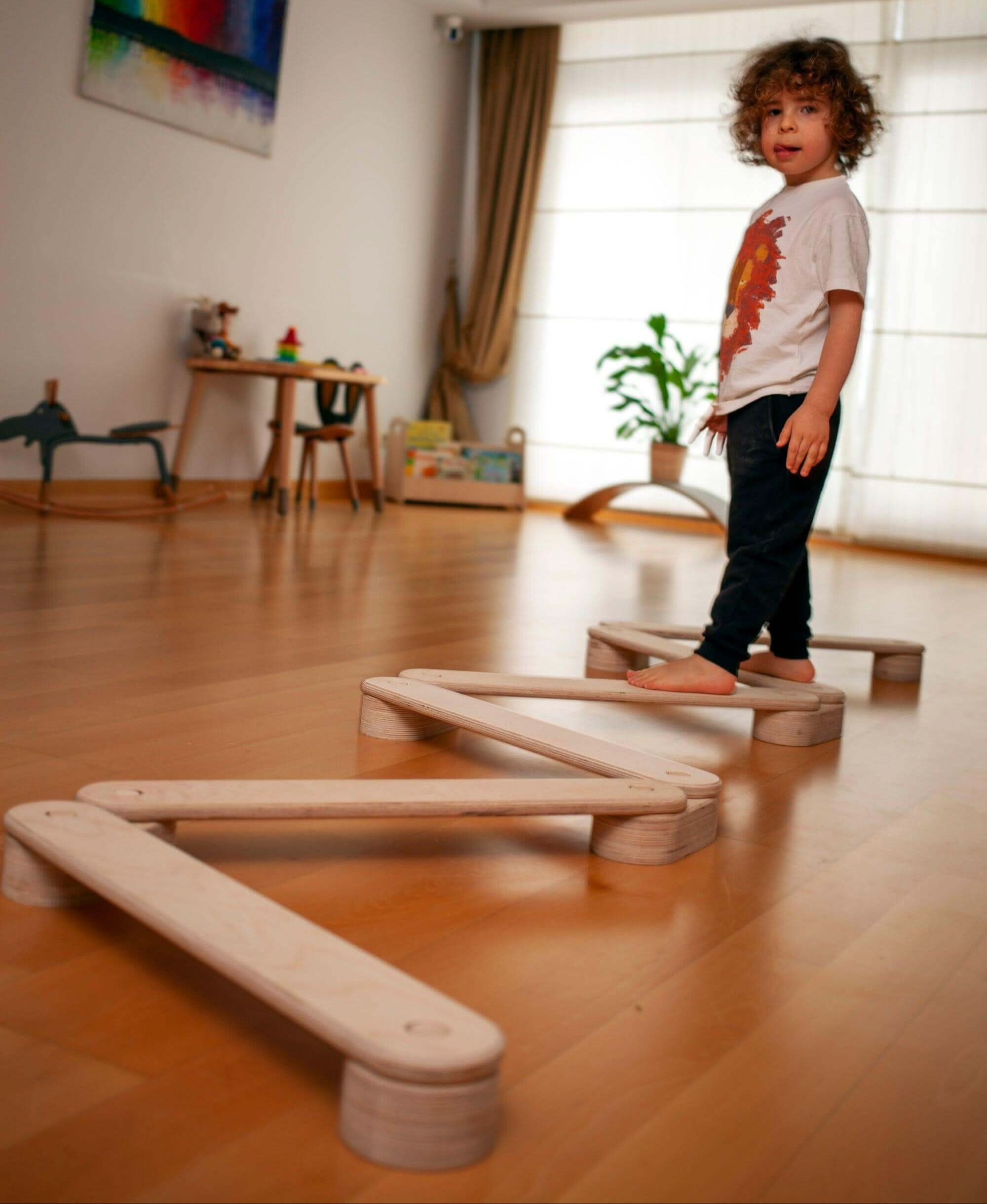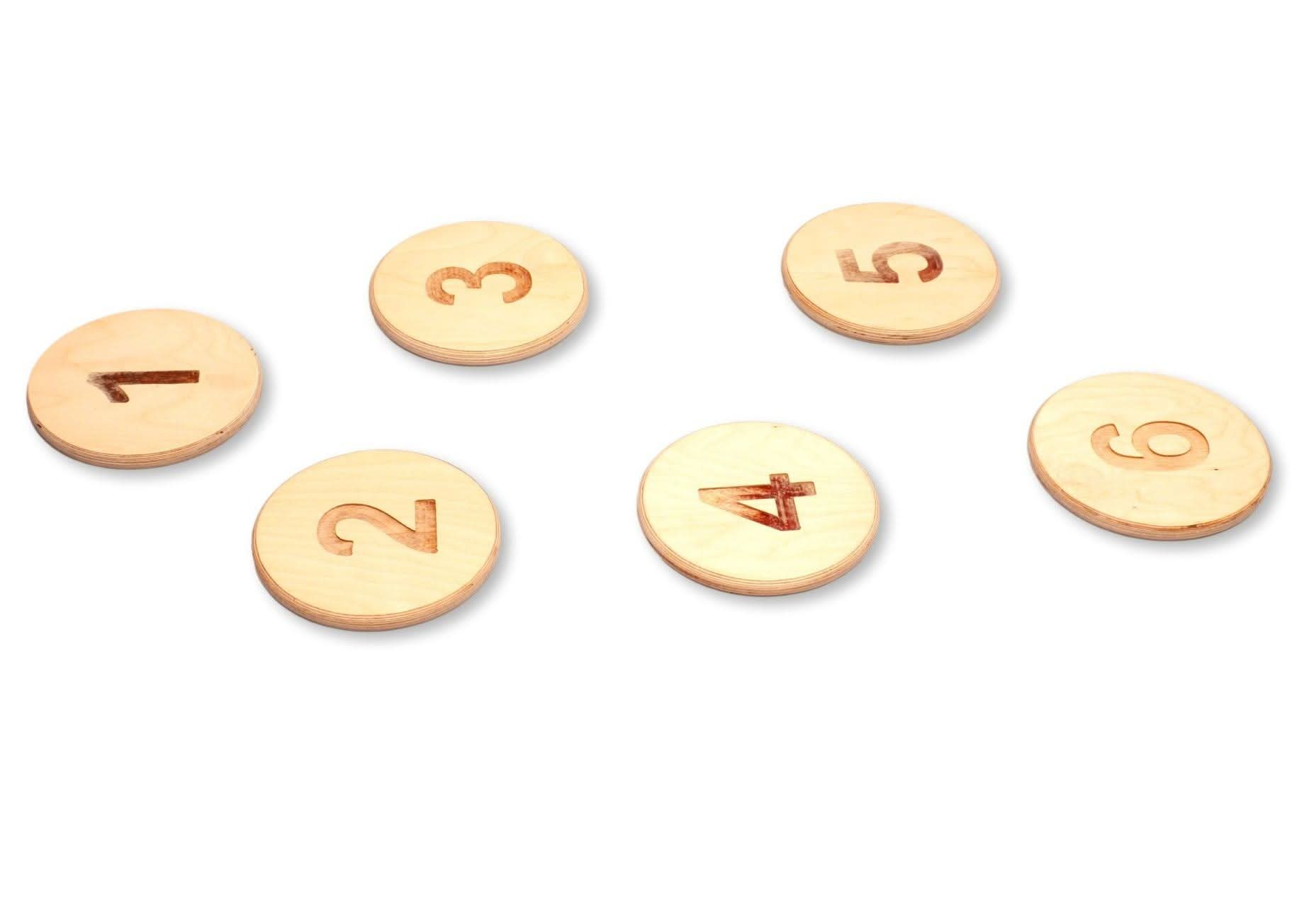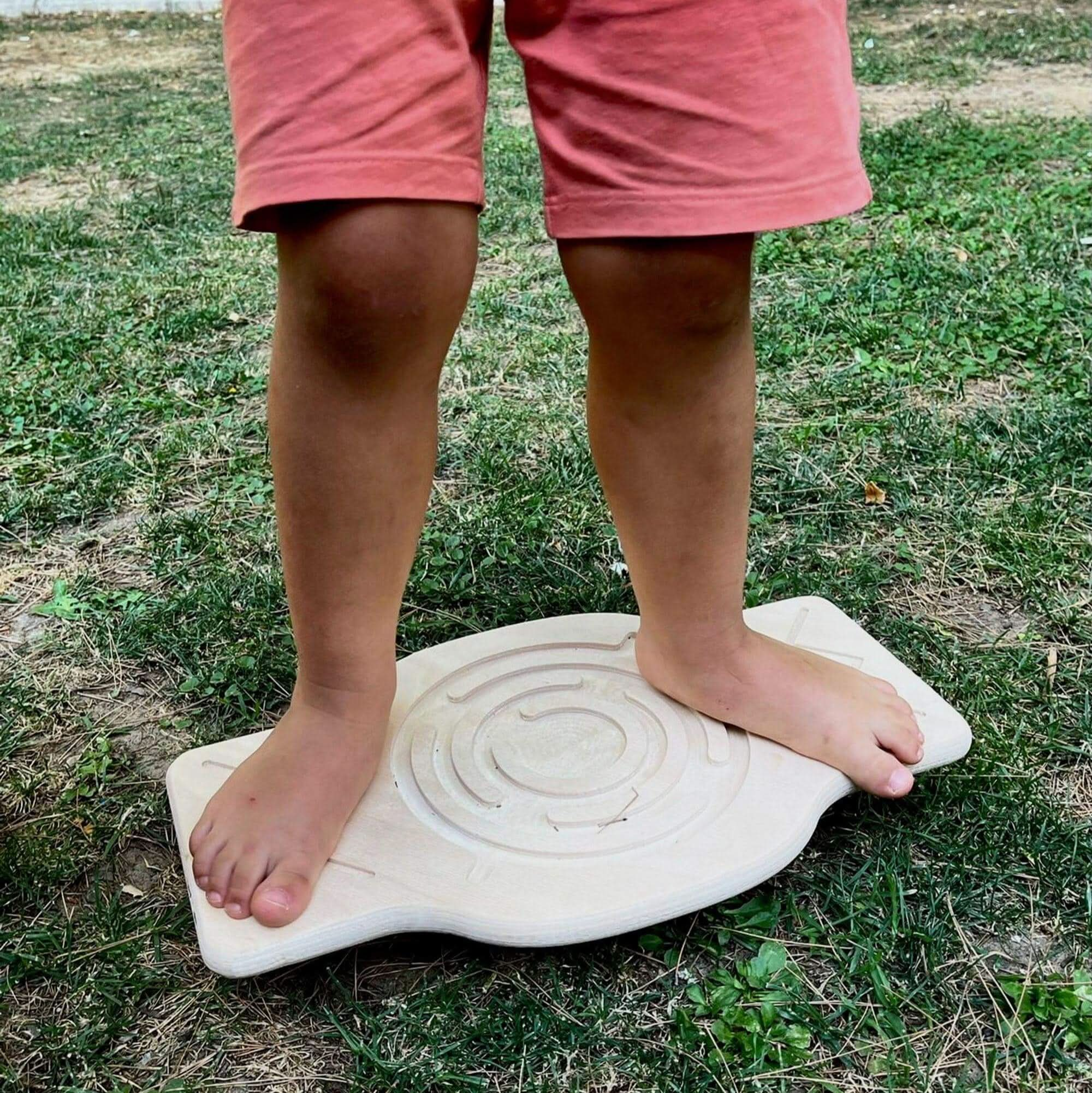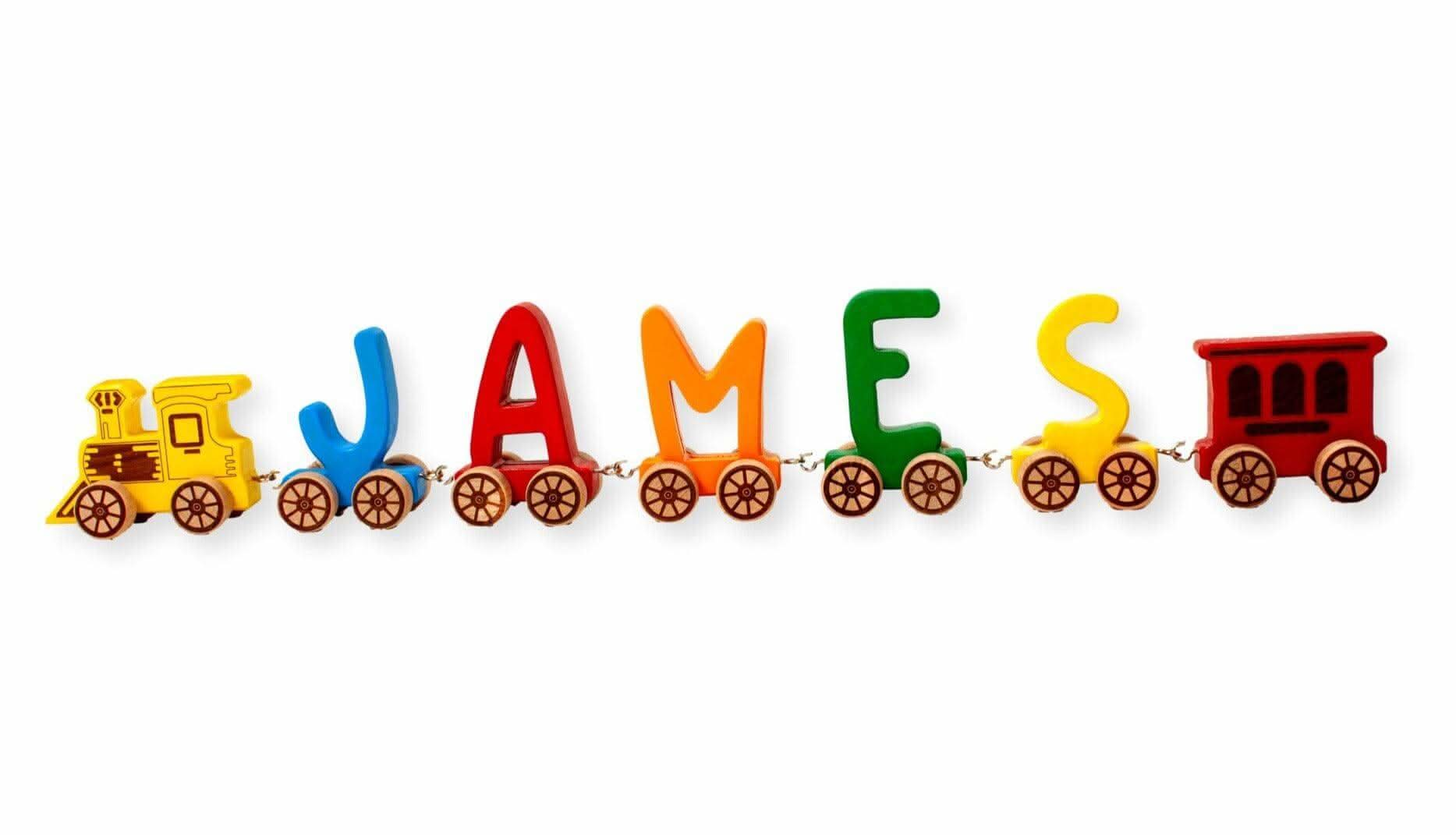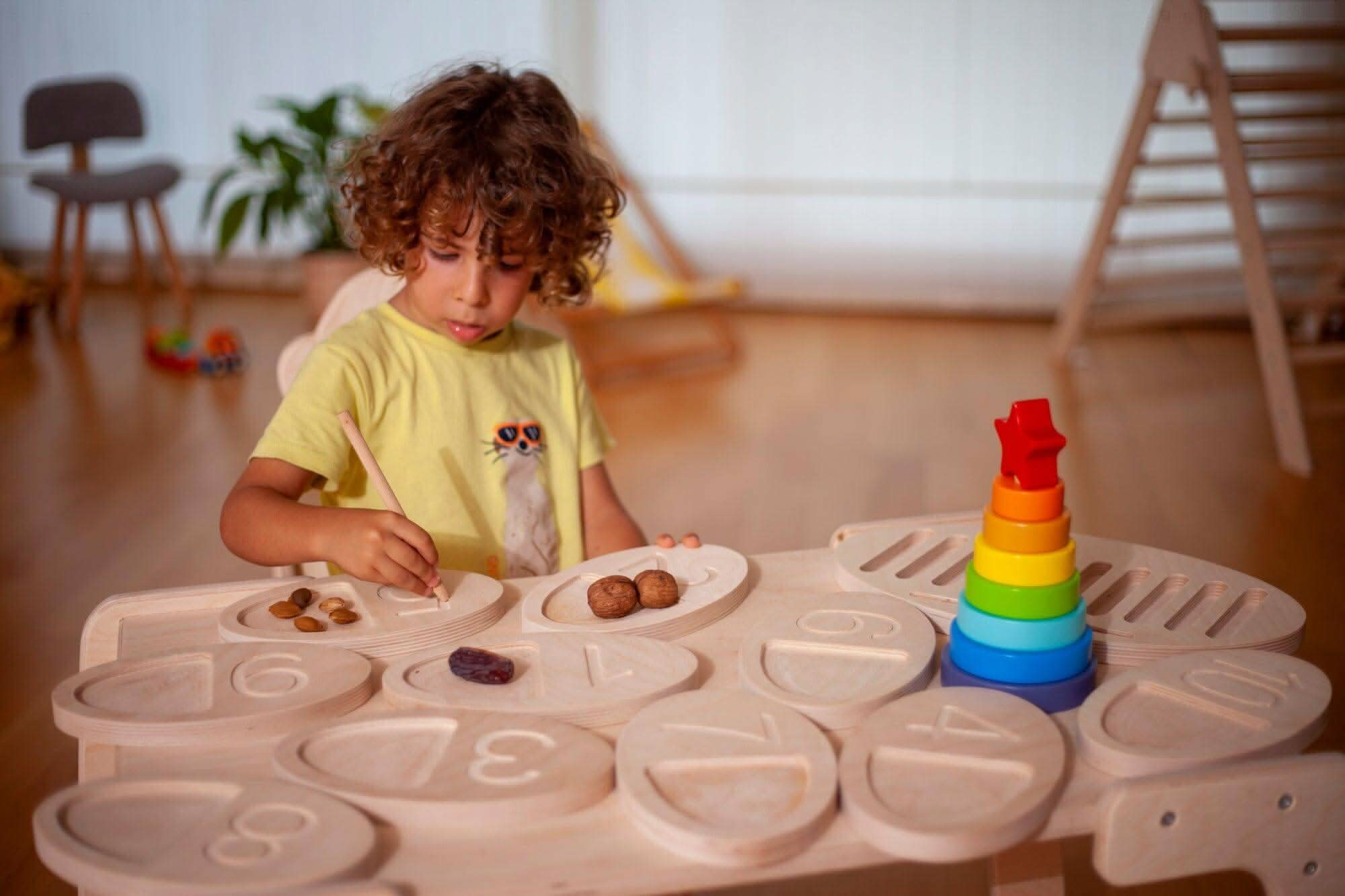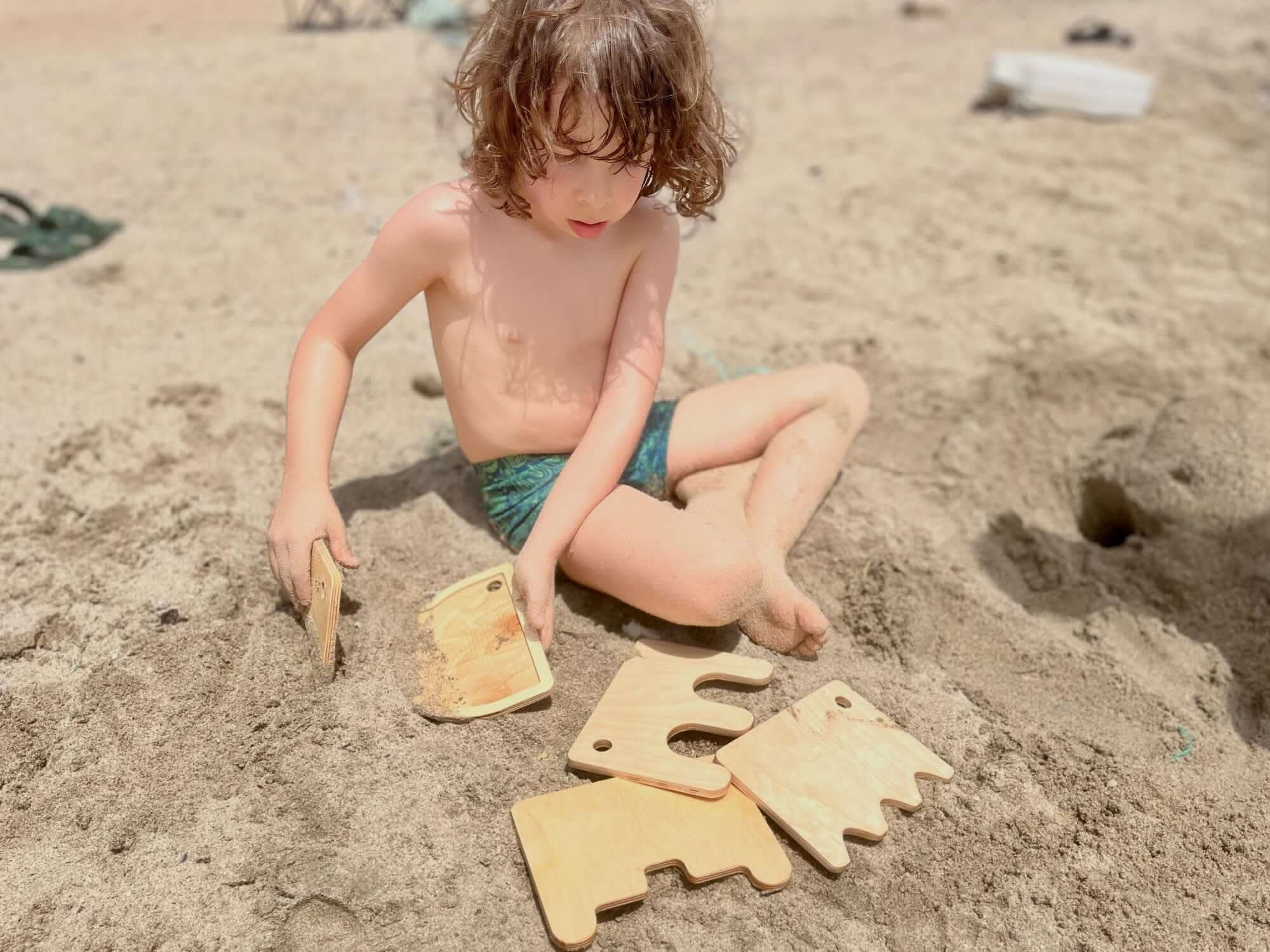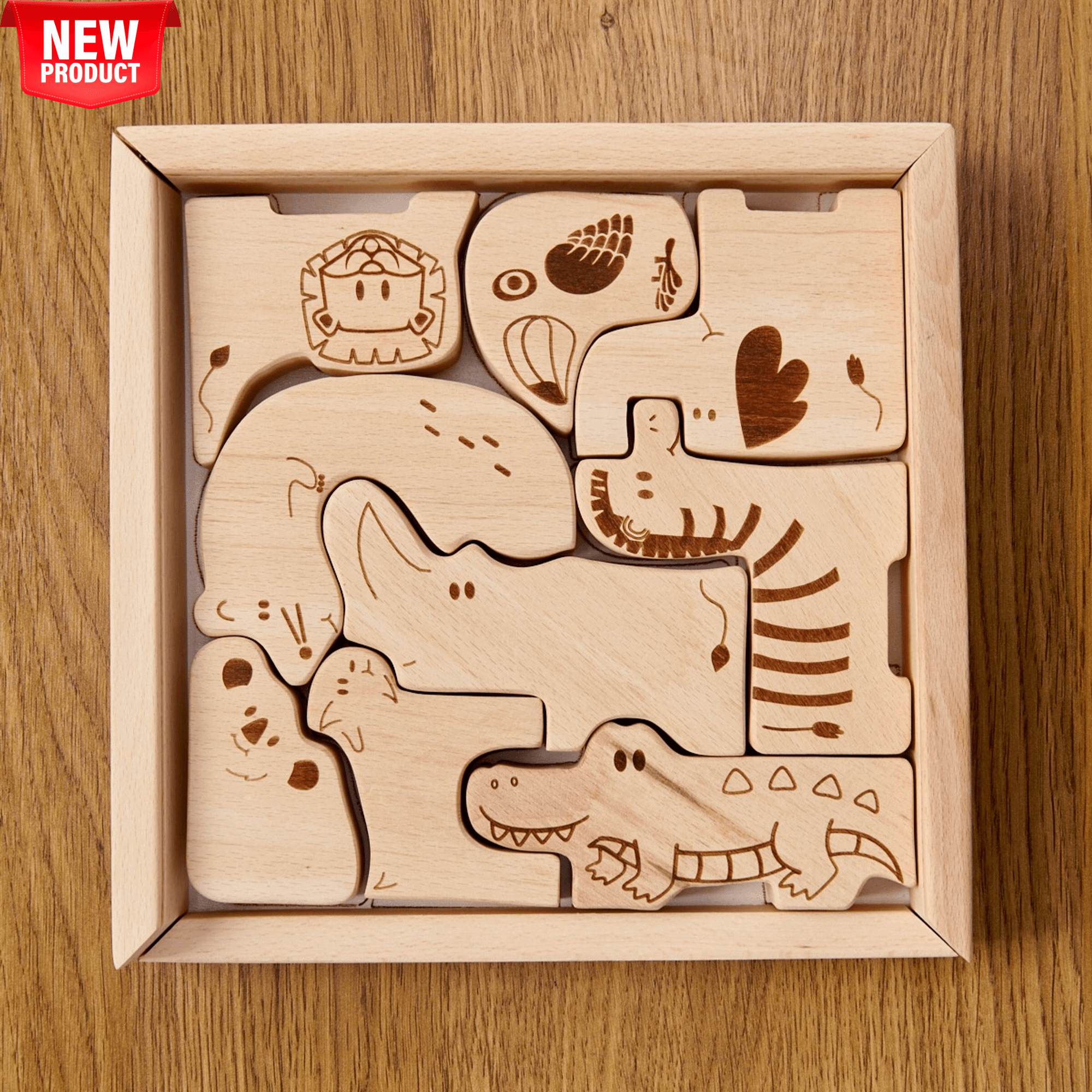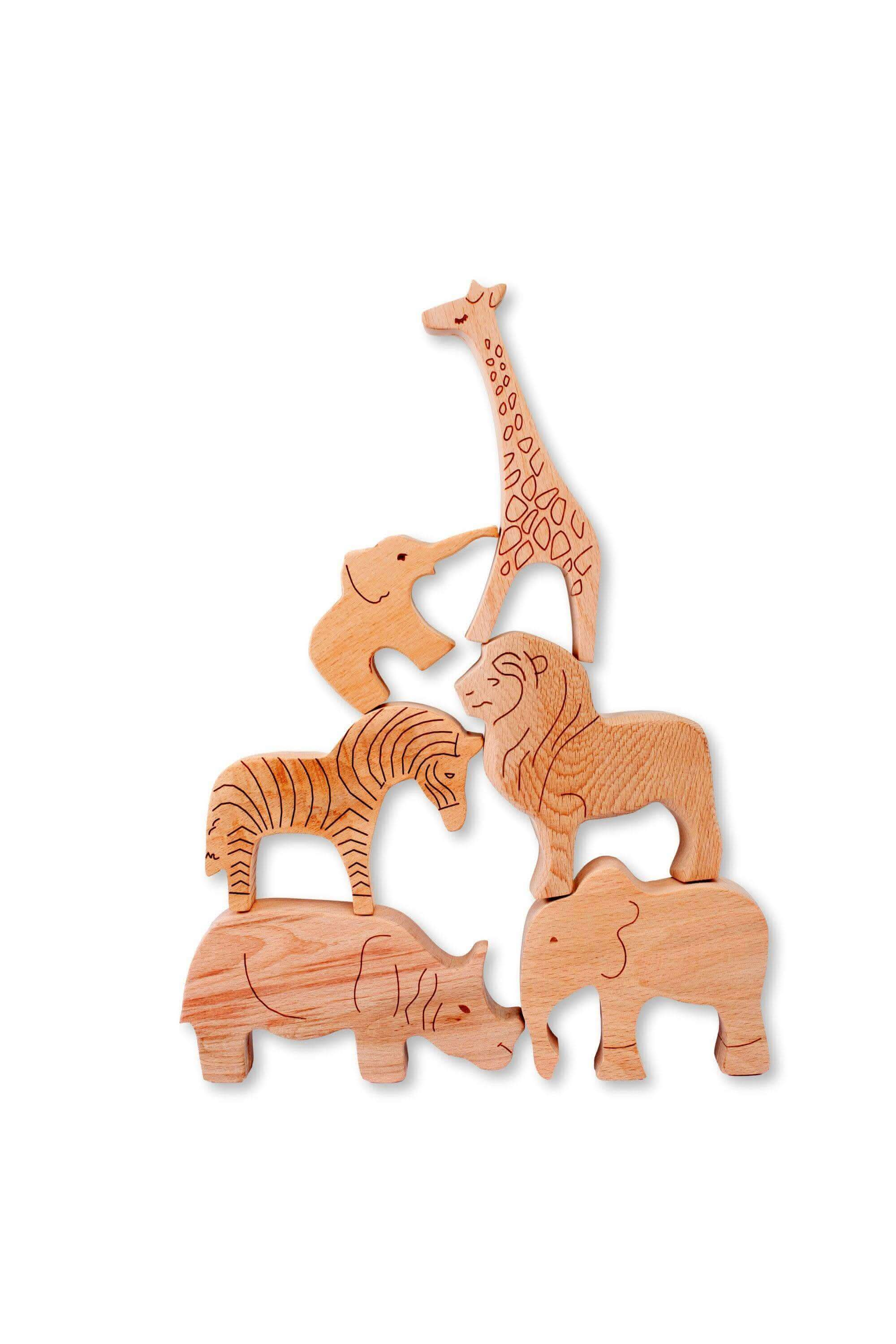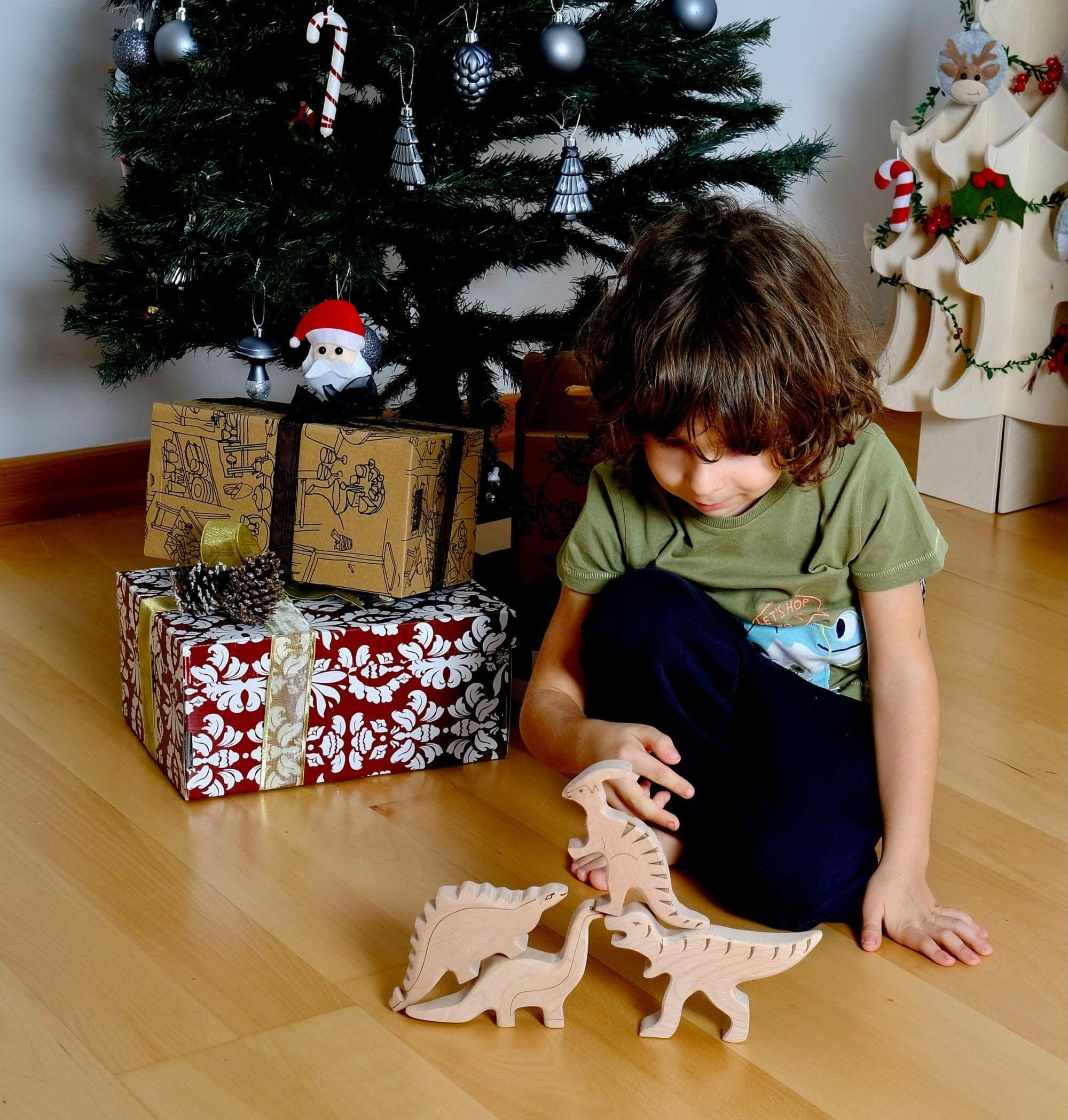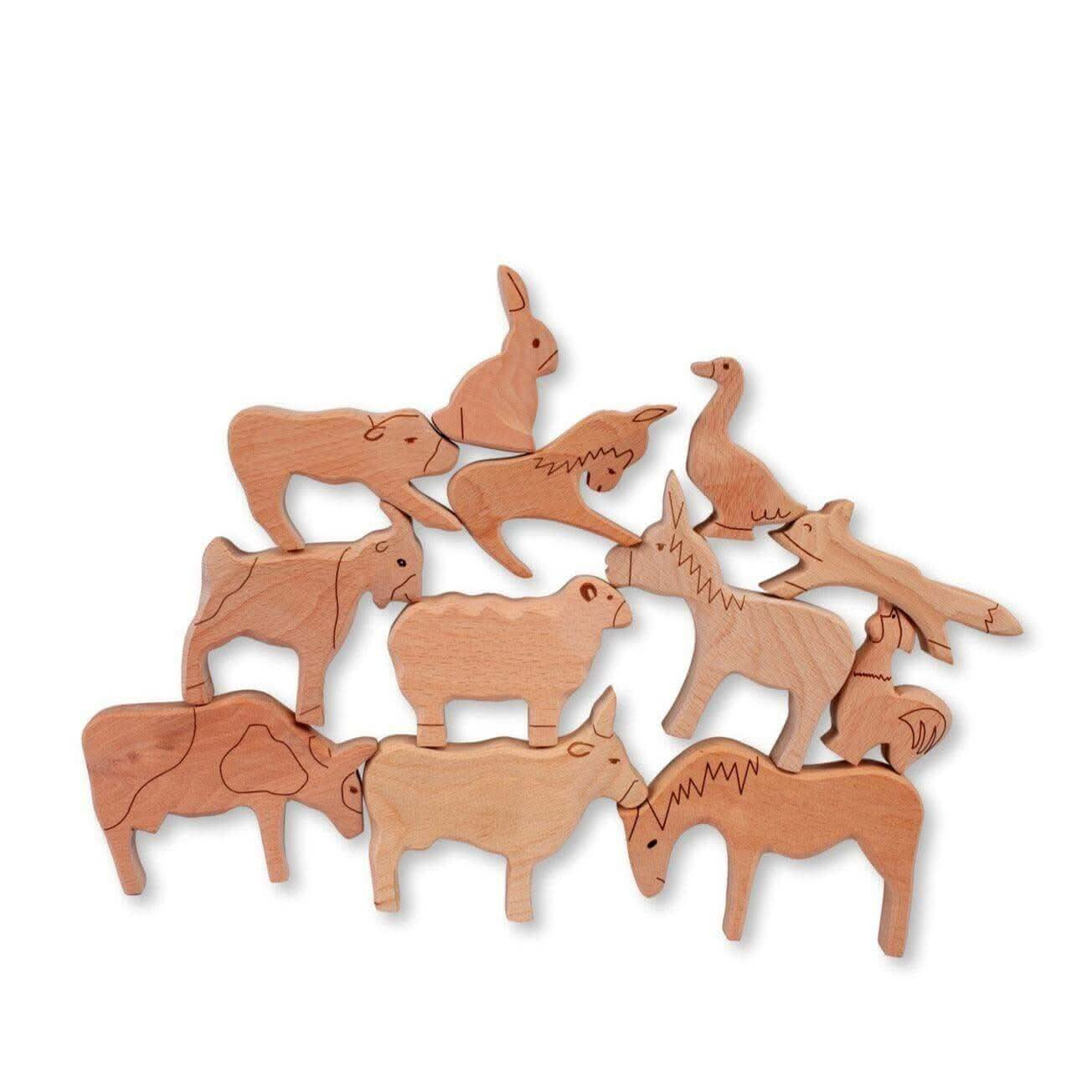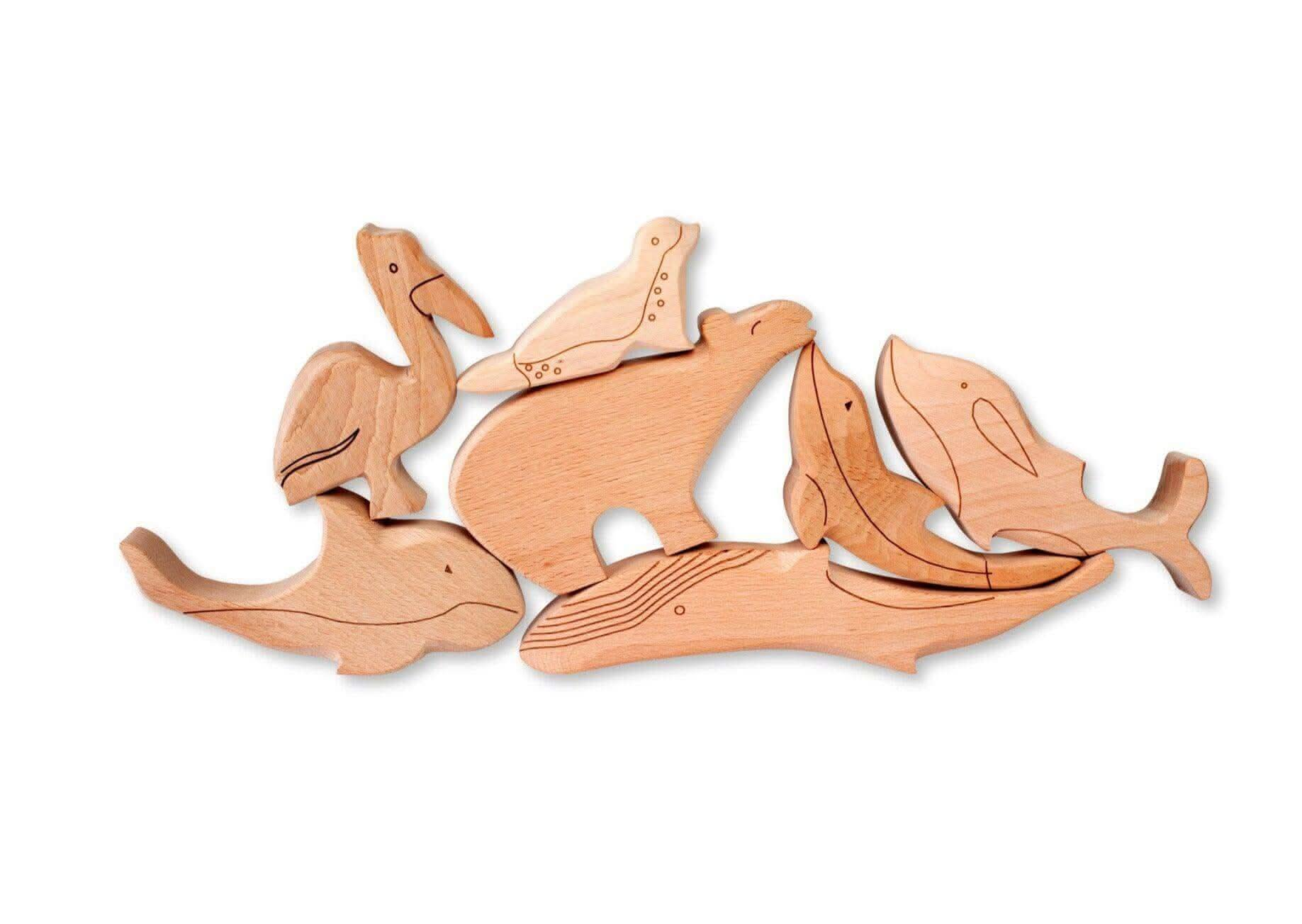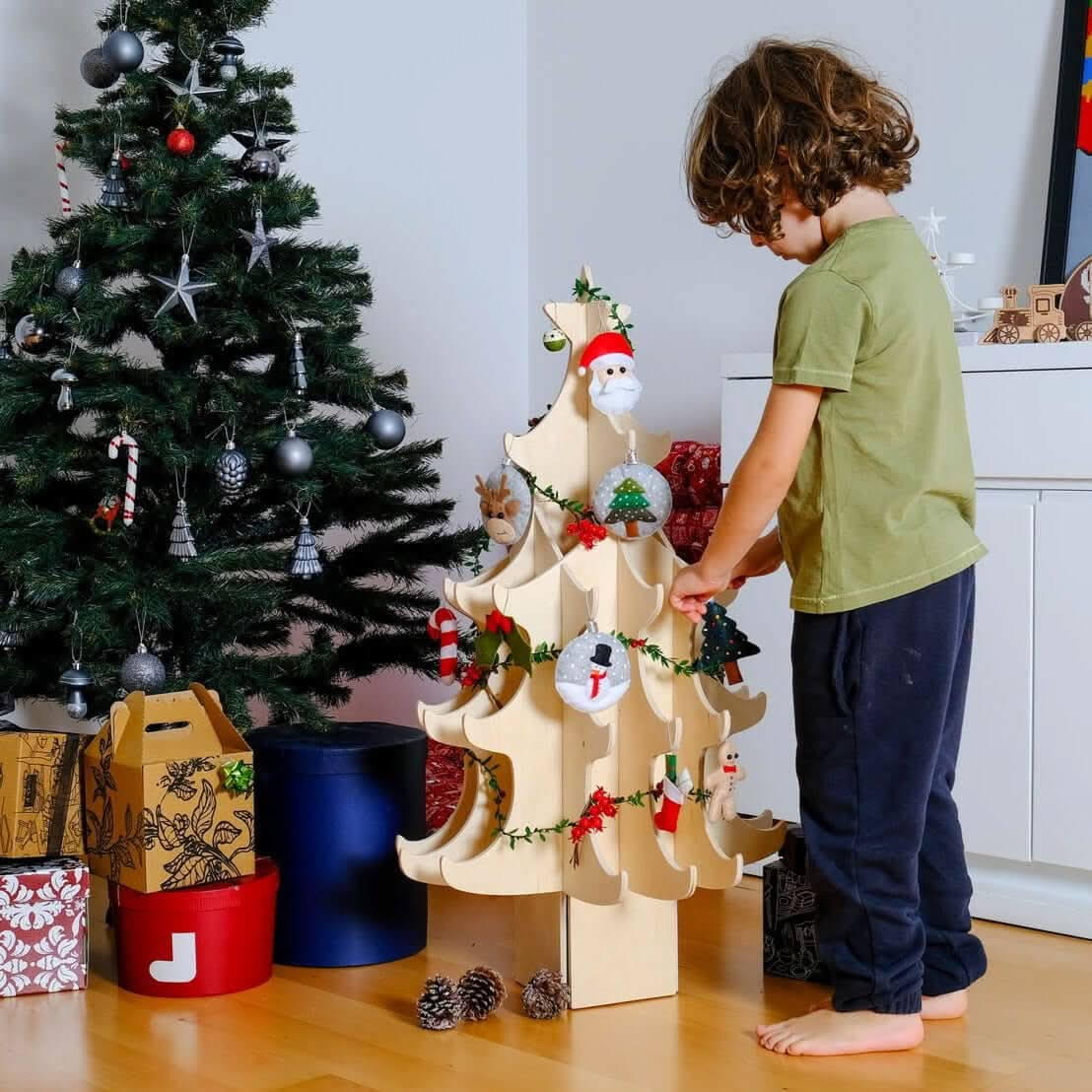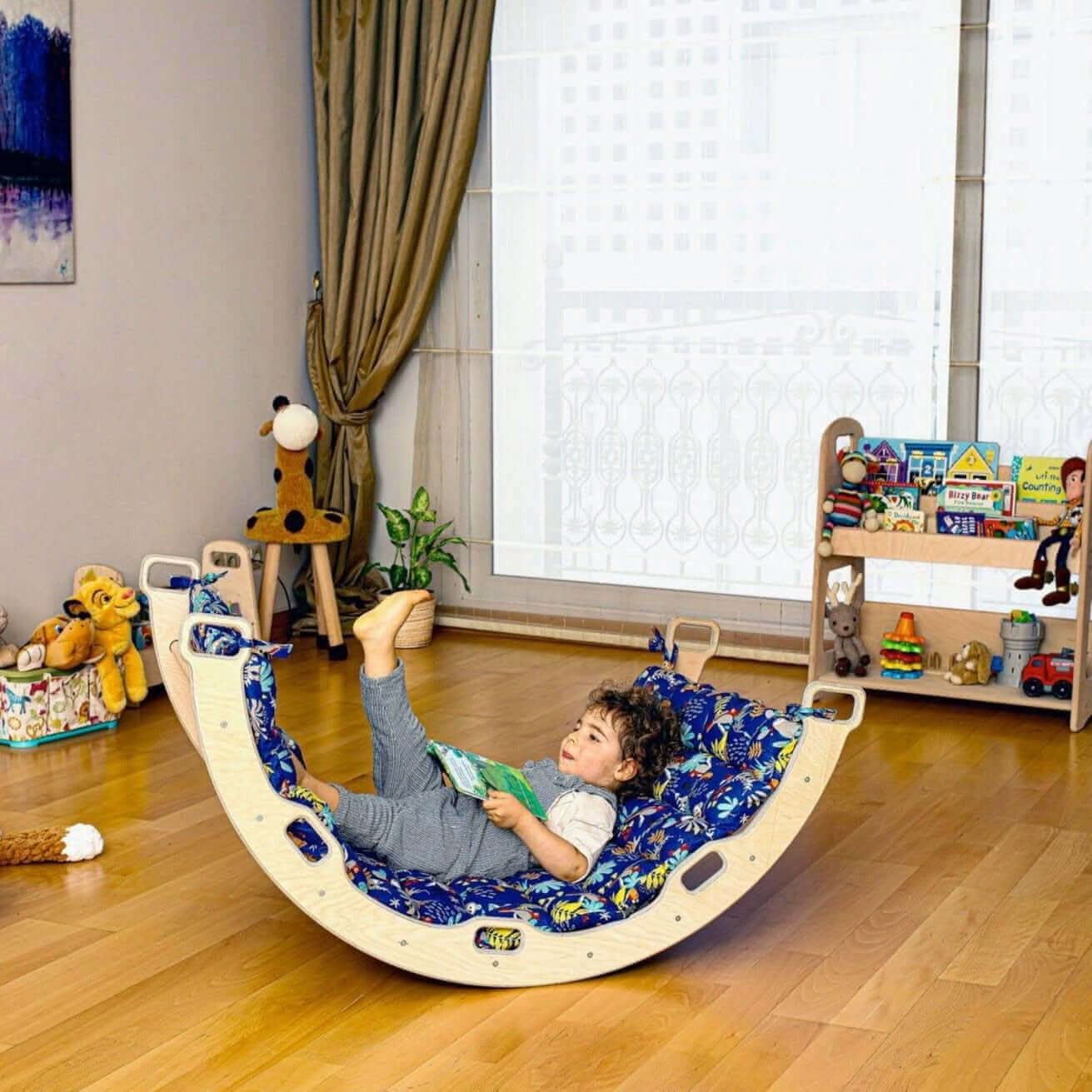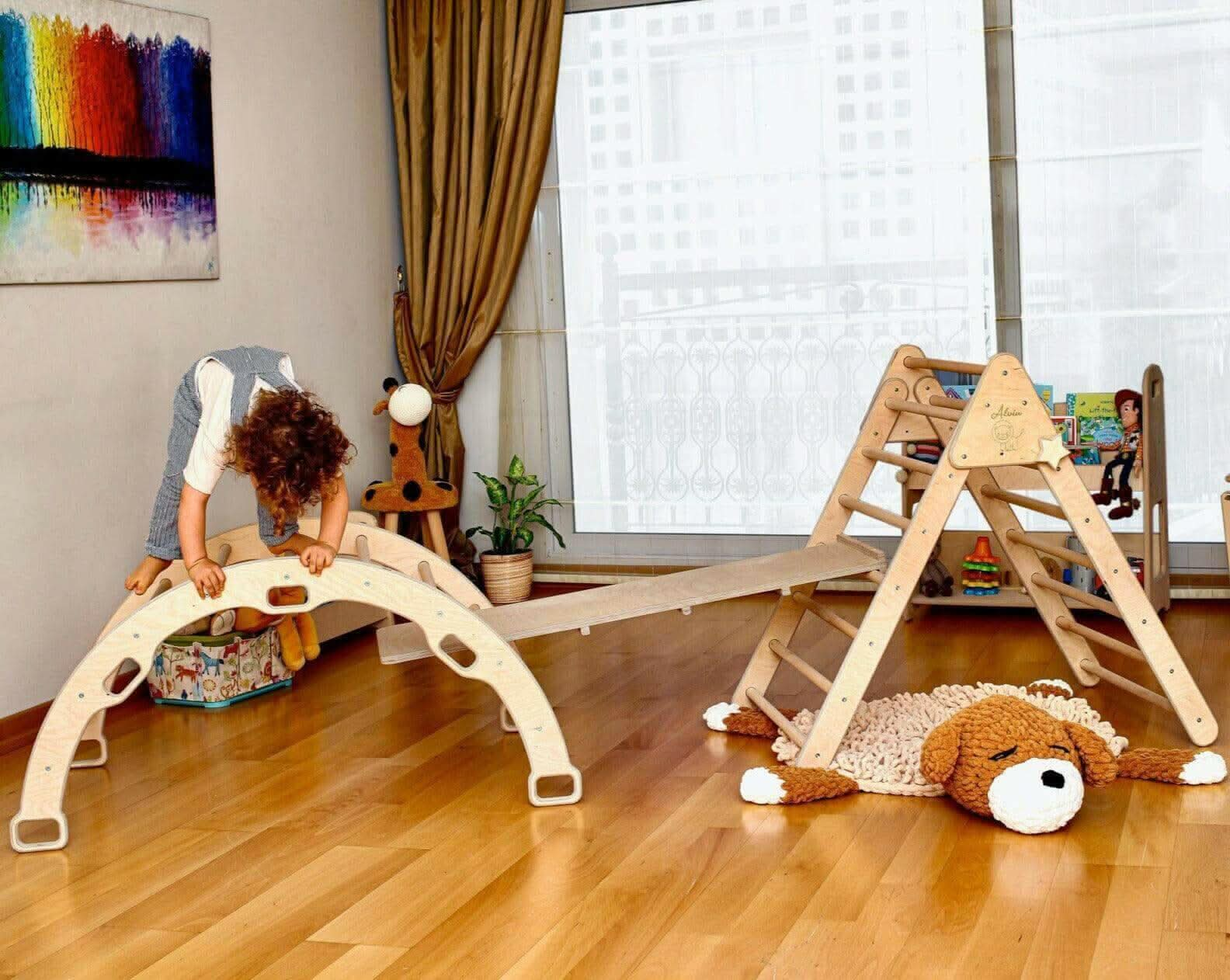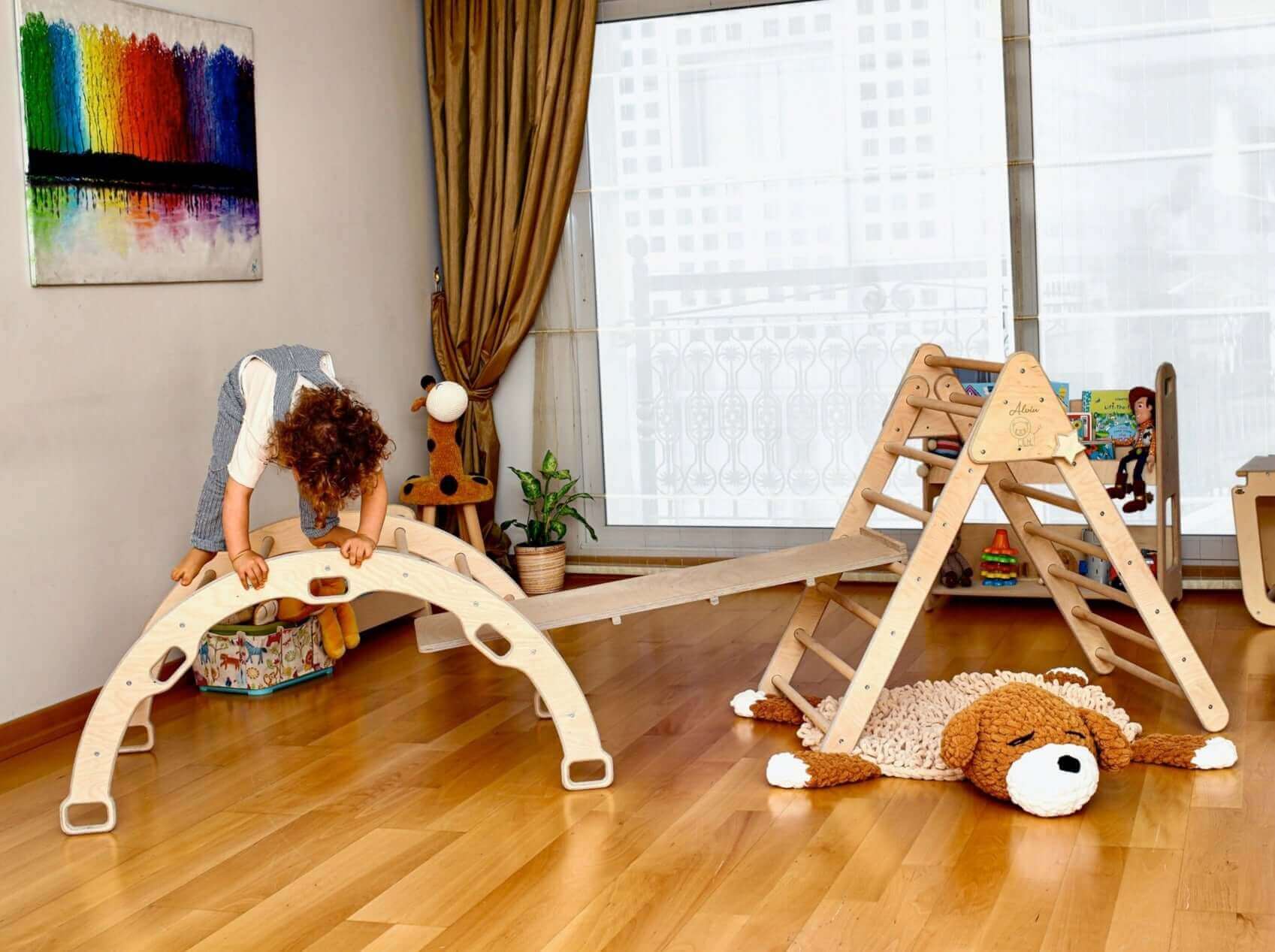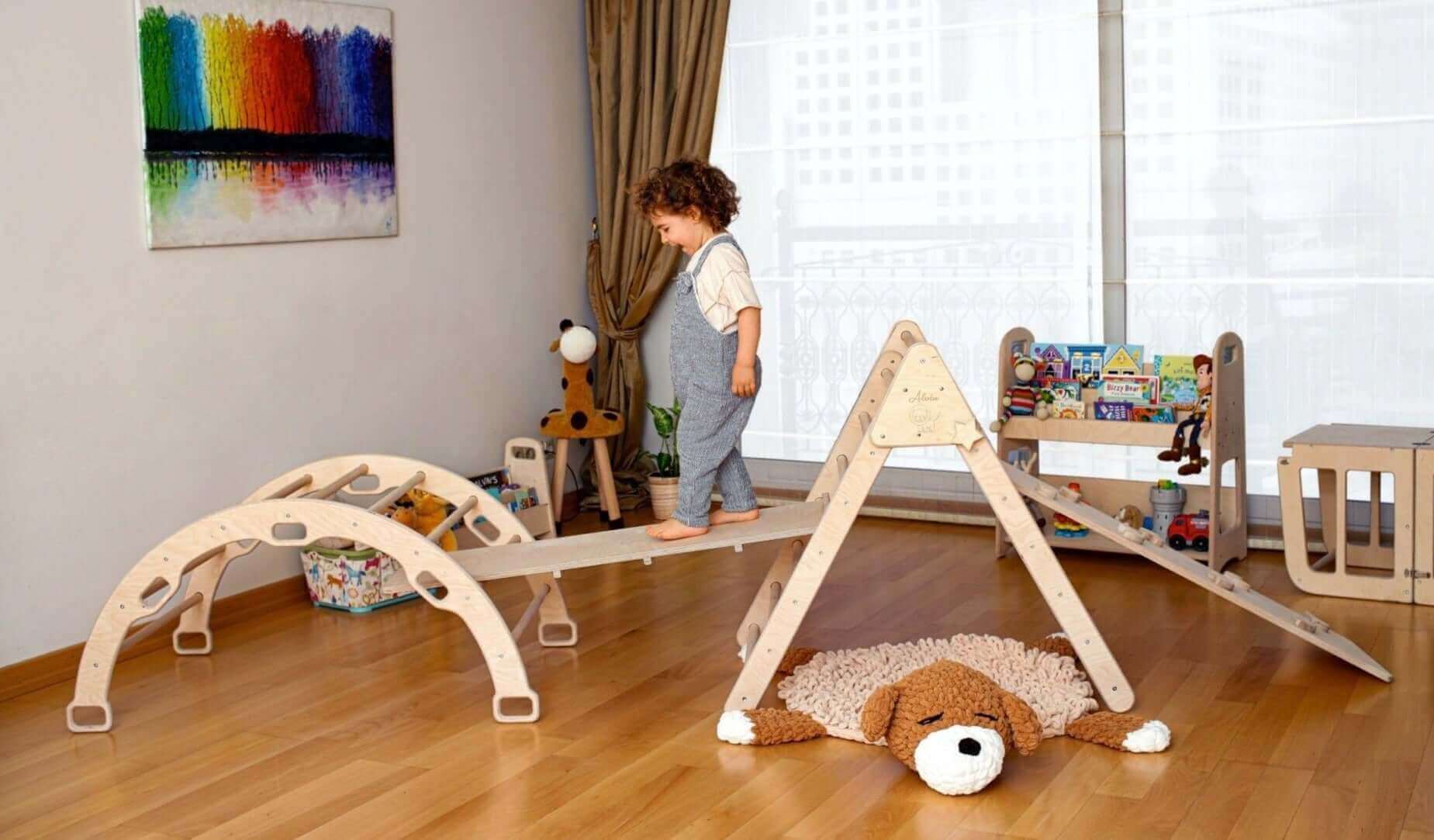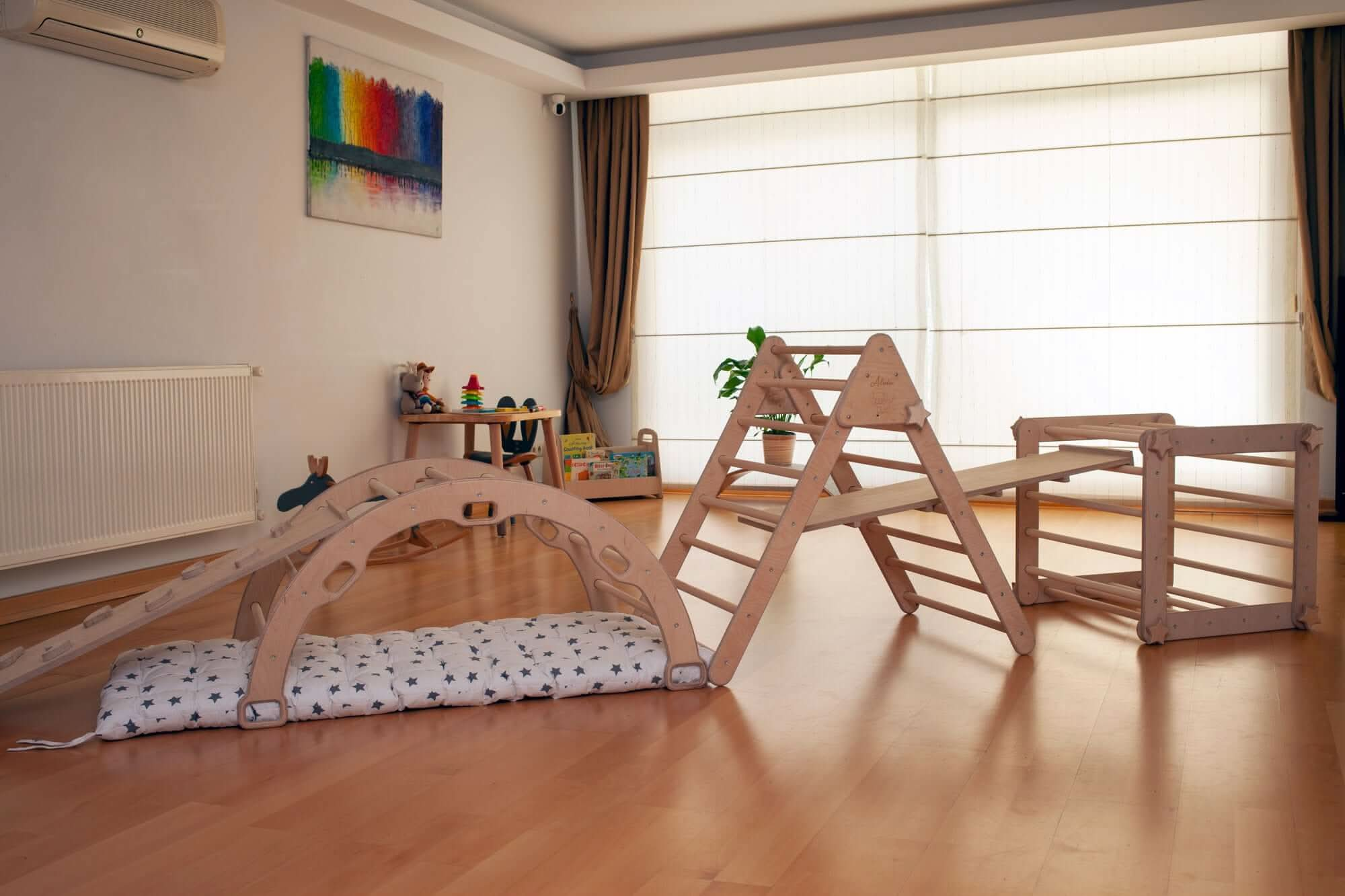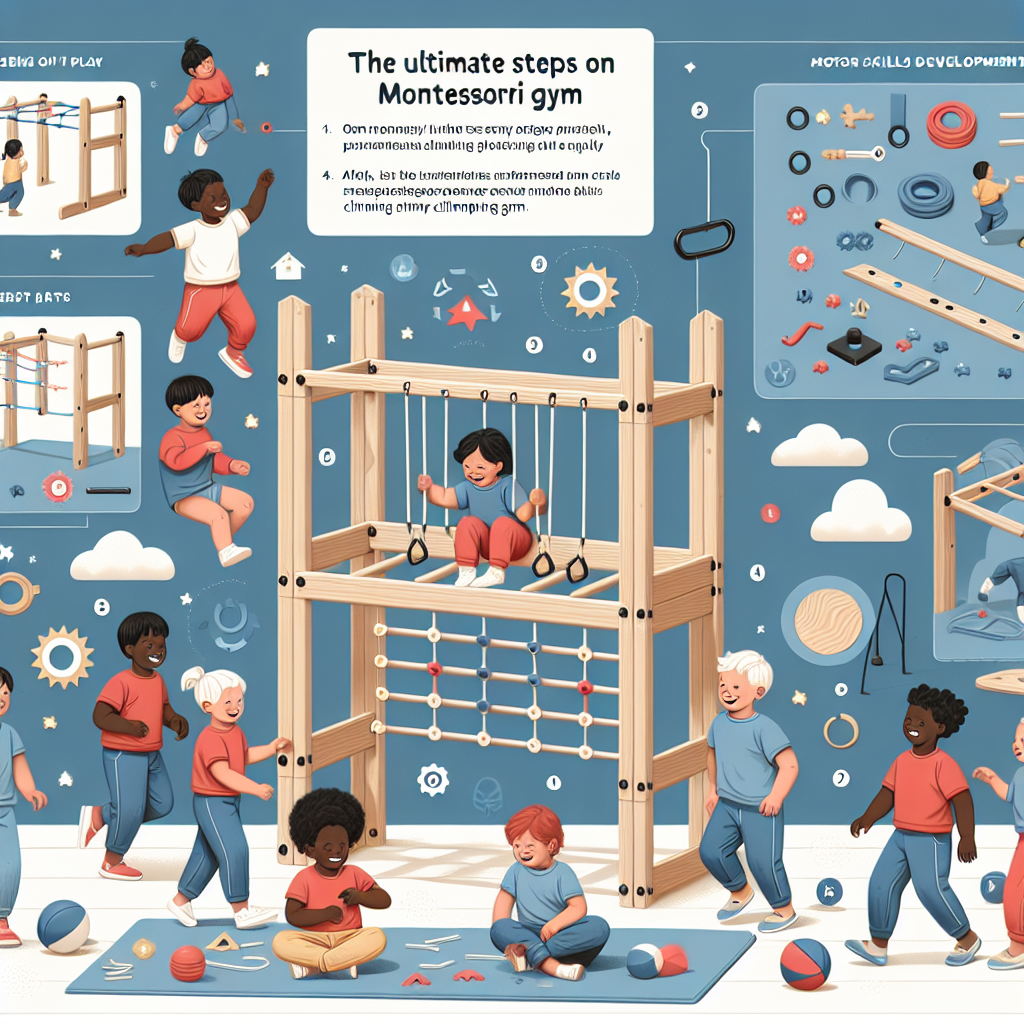
· By halit burak capraz
Ultimate Guide to Montessori Climbing Gyms: Building Motor Skills Through Play
In the world of child development, the Montessori approach is renowned for its emphasis on learning through play. A key component of this method is the use of climbing gyms specifically designed to promote motor skills and physical development in toddlers. In this guide, we will explore the benefits and features of Montessori climbing gyms, providing insights into how these tools can enhance your child's growth through fun and engaging play.
What is a Montessori Climbing Gym?
Diving into the world of Montessori education is like discovering a treasure trove of development opportunities for your little one. At the heart of this exploration lies the Montessori climbing gym, an essential piece of Montessori play equipment that encourages growth through active play.
But what exactly is a Montessori climbing gym? Imagine a safe, structured environment where toddlers are free to climb, balance, and explore at their own pace. These indoor climbing toys are ingeniously designed to enhance motor skills, foster independence, and ignite creativity. Whether it's a wooden climbing structure or a soft play climber for toddlers, each piece is crafted with intent.
The beauty of Montessori style toys lies in their simplicity and versatility. They're not just toys; they're gateways for children to challenge themselves physically while honing their cognitive abilities. These structures promote gross motor skills development, crucial for activities like running and jumping later in life.
The Hallmarks of a True Montessori Climbing Gym
- Natural Materials: Most designs emphasize eco-friendly materials like sustainably sourced wood to create safe climbing toys for toddlers.
- Simplicity: Unlike complex gadgets that do everything but make coffee (although wouldn't that be nice?), these gyms focus on allowing children to explore open-ended possibilities.
- Sensory Engagement: Each component offers a variety of textures and shapes, transforming play into a sensory-rich experience.
- Safety First: Ergonomically designed with smooth edges and non-toxic finishes, ensuring peace of mind for parents as their little adventurers roam freely.
A great example of such thoughtful design can be found in our collection at Kidodido LLC. From balance beams to toddler climbing equipment, these pieces not only support early childhood development but also stand as sustainable children's play furniture options. For those curious about how these structures can benefit cognitive growth while doubling as an indoor playground, our detailed guide on holistic child development delves deeper into this fascinating topic (read more here).
The magic doesn't stop here! When children interact with these versatile indoor play gyms, they aren't just having fun—they're building the foundation for lifelong physical activity and learning. So next time you see your toddler scaling that wooden activity gym like a seasoned rock climber (minus the chalk bag), take heart in knowing they're getting more than just exercise; they're gaining confidence with every step.
The Benefits of Toddler Climbing Equipment
In the world of early childhood development, the term "toddler climbing equipment" might sound like a high-stakes adventure. After all, when's the last time you associated "safe" with a mini Mount Everest right in your living room? But, fear not! These pint-sized peaks are actually packed with benefits that go far beyond just keeping your little ones entertained. Let's explore how Montessori climbing gyms can boost children's motor skills and overall development.
1. Boosting Gross Motor Skills
Research shows that young children develop fundamental gross motor skills between the ages of 2 and 5. According to experts at Active For Life, toddlers need ample opportunity to run, jump, and climb to help build coordination, strength, and balance. Enter toddler climbing equipment! These structures provide an ideal platform for kids to enhance their gross motor skills through active exploration and play.
2. Encouraging Open-Ended Play
Toddler climbing equipment isn't just about physical activity; it's also a playground for the imagination. The versatility of Montessori play gyms encourages open-ended play where children can invent games, create stories, or even transform into explorers on a wild jungle expedition—minus the mosquito bites!
3. Enhancing Social Skills and Collaboration
Climbing gyms are also fantastic for social development. When toddlers engage with others on these structures, they learn valuable lessons in sharing space, taking turns, and cooperative play—skills that will serve them well beyond their playground years.
4. Developing Problem-Solving Abilities
Toddlers are natural-born problem solvers (just watch them figure out how to open a child-proof lock). Climbing equipment challenges them to assess risks and devise strategies to navigate their environment safely. This nurtures critical thinking from an early age—in other words, your tiny tot is not just playing; they're training to be the next Sherlock Holmes.
5. Promoting Safe Exploration in a Controlled Environment
Safe climbing toys for toddlers provide a secure environment where children can satisfy their natural curiosity without unnecessary risks. These toys are designed with safety in mind—rounded edges, sturdy construction, non-toxic materials—offering peace of mind for parents while allowing children the freedom to explore.
The Eco-Friendly Factor: Sustainable Play Matters
An often-overlooked aspect is the sustainability of these toys. Many options available today are crafted from eco-friendly materials like natural wood, offering not only environmental benefits but also durability that ensures long-lasting play value.
If you're inspired by this peek into toddler climbing equipment's potential to enrich your child's life while giving them an outlet for boundless energy (goodbye couch jumping!), you might want to explore more on how these versatile indoor play gyms contribute significantly to holistic child development.
Key Features of Montessori Play Equipment
When it comes to fostering a child's growth through play, Montessori climbing gyms shine as an exemplary choice. These thoughtfully designed pieces of play equipment are much more than just toys—they're educational tools encouraging holistic child development. Here's a deeper dive into what makes these items stand out.
1. Natural Materials
Montessori play equipment is frequently crafted from natural and eco-friendly materials, like high-quality wood. This not only ensures durability but also offers a tactile experience that plastic alternatives can't match. According to the International Journal of Environmental Research and Public Health, children who engage with natural materials often develop better sensory skills.
2. Safety First
These wooden play structures are designed with safety as a top priority. Rounded edges, non-toxic finishes, and stability features mean parents can breathe easy while their little ones explore and climb. It's like having peace of mind on tap—but for free!
3. Encourage Open-Ended Play
Open-ended play structures allow children to use their imagination, turning a simple climbing gym into an adventurous jungle one day and a pirate ship the next! This form of imaginative play is crucial for cognitive development, as noted by the American Academy of Pediatrics.
4. Developmental Benefits
- Gross Motor Skills: Climbing gyms promote gross motor development by encouraging kids to use large muscle groups as they climb and balance.
- Sensory Exploration: The various textures and shapes provide sensory stimulation that enhances perception skills.
- Balance and Coordination: Navigating through different structures helps improve proprioception.
5. Ergonomic Design
The ergonomic aspects ensure that each piece fits well within the physical capabilities of toddlers while challenging them just enough to foster growth—think Goldilocks, but in the world of toddler gym design.
Aesthetic Appeal in Home Settings
The minimalist design common in Montessori-inspired products effortlessly integrates into home décor, proving that children's furniture doesn't have to be an eyesore.
No wonder Montessori climbing gyms continue to be favorites among parents seeking safe, educational, and aesthetically pleasing options for their children’s indoor playgrounds!
Selecting the Right Indoor Climbing Toys for Your Child
When it comes to montessori climbing gyms, choosing the right one for your little adventurer can feel like navigating a toddler through a candy store—so many options, but which one brings the best value and joy? With an array of choices from wooden climbing structures to soft play climbers, making the right choice is crucial for your child's developmental journey.
Understanding Your Child's Needs and Abilities
Before diving into the colorful world of kids’ climbing furniture, it's essential to understand your child's current developmental stage. Are they a daring explorer ready for a challenging wooden activity gym or are they just starting out with basic balance and coordination toys? According to a study by the American Academy of Pediatrics, engaging children in safe motor skill activities can significantly enhance their physical development.
- Toddlers (Ages 1-3): Look for safe climbing toys for toddlers that promote gross motor skills, such as low-level ramps and tunnels.
- Preschoolers (Ages 3-5): Opt for more complex structures like versatile indoor play gyms that encourage imaginative play and problem-solving skills.
The Importance of Safety and Materials
Your child’s safety should always come first. Seek out eco-friendly climbing toys crafted from natural wood; they're not only sturdy but also gentle on the planet. Materials should be non-toxic and finished with child-safe paints or sealants. For example, Kidodido offers an extensive line of sustainable children's play furniture designed with both fun and safety in mind.
User-Friendly Design Features
A great Montessori play gym should be ergonomically designed to cater to small hands and feet while ensuring stability. Consider options like ergonomic climbing toys that grow with your child—adjustable heights or modular pieces allow customization as they develop new skills.
Cultivating an Engaging Environment
An indoor playground equipment for home is more than just a toy—it’s a learning environment where kids can engage in sensory-rich experiences. Choose equipment that provides open-ended play opportunities allowing children to express creativity freely. A well-chosen montessori style toy could serve as both an active play gym for toddlers and a tool for learning through exploration.
Conclusion: Tailoring Play to Suit Your Child's Growth
The right indoor climbing toy is not just about physical activity—it's about nurturing your child's curiosity, confidence, and creativity. By choosing carefully, you’re investing in their holistic growth. For more ideas on montessori-inspired choices, check out our comprehensive guide on Montessori Furniture and Play Equipment for Holistic Child Development.
Sustainable Children's Play Furniture: Why it Matters
In today's fast-paced world, the concept of sustainability has finally taken center stage, and for a good reason. When it comes to our little ones, opting for sustainable children's play furniture means not only caring for the environment but also ensuring a healthier future for them. So, what's all the buzz about sustainable play equipment, and why should you care? Let's dive in.
The Environmental Angle: More Than Just a Fad
The journey towards sustainability starts with making conscious choices. Natural wood play equipment and other eco-friendly climbing toys are not just visually appealing; they significantly reduce environmental impact compared to their plastic counterparts. Did you know that an estimated 90% of toys end up in landfills? By choosing sustainable options, you're playing a part in lowering that staggering statistic while providing your child with safe climbing toys for toddlers.
- Eco-friendly materials: Sustainable play furniture is often made from responsibly sourced wood or recycled materials, reducing deforestation and waste.
- Durability: High-quality wooden structures are designed to last longer, reducing the need for frequent replacements and minimizing landfill waste.
The Health Benefits: Safer Spaces for Play
Sustainability isn't just about trees and recycling; it's about the health of our children too. Non-toxic toddler gym equipment is free from harmful chemicals often found in plastic toys. This means fewer toxins in your child's environment and peace of mind for you.
- Reduce chemical exposure: Wood and other natural materials are typically free from phthalates and BPA, common chemicals in plastics linked to health issues.
- Promote physical activity: Sustainable toys like a Montessori climbing gym encourage active play, which is crucial for developing gross motor skills, balance, and coordination.
Aesthetic Appeal Meets Functionality
If "Pinterest-worthy" is your middle name (or if you just appreciate beautiful interiors), wooden climbing structures offer an aesthetic that blends seamlessly into your home environment. These pieces are not only ergonomic climbing toys for children but also serve as beautiful additions to any room with their natural finishes and timeless designs.
Sustainable children's play furniture provides the perfect balance between functionality and aesthetics—like a kale smoothie that's both healthy and Instagram-ready. Who knew saving the planet could look this good?
For more insights into how Montessori-style toys contribute to holistic child development, check out our comprehensive guide here.
The Role of Imaginative Play in Early Childhood Development
Imagine your toddler navigating a Montessori climbing gym, transforming it into a pirate ship, a mountain peak, or even a hidden jungle fortress. As whimsical as this might sound, imaginative play is more than just fun—it's a powerhouse for early childhood development.
Imaginative Play: The Creative Playground for Young Minds
Imaginative play allows children to explore the world around them through the lens of fantasy. According to research from the American Academy of Pediatrics, play is crucial for healthy brain development, offering children the opportunity to develop cognitive skills and emotional resilience.
- Cognitive Growth: By engaging in role-play and storytelling, children enhance their language and communication skills. They learn new words, experiment with sentence structures, and become adept at expressing ideas.
- Social Skills: Cooperative play teaches negotiation and collaboration. When kids turn their climbing gym into a castle or spaceship, they negotiate roles and share narratives—a crash course in teamwork.
- Emotional Development: Imaginative play is an avenue for processing emotions. Through role-playing scenarios, children confront fears and test boundaries within a safe environment.
A Stage Set by Montessori Principles
The Montessori method emphasizes child-led learning through hands-on activities that foster independence. A Montessori climbing gym provides an ideal backdrop for imaginative play. Its open-ended design allows children to invent various worlds without predefined rules or limitations.
This freedom not only boosts creativity but aligns perfectly with Montessori's vision of nurturing autonomous learners who are curious about the world around them. When we provide such versatile indoor play gyms for kids learning towers and climbers, we essentially hand them the keys to unlock their imagination.
A Dash of Humor – Because Giggles Are Part of the Learning Process
Now let's be honest: while your little one might be scaling their wooden climbing structure thinking they're Sir Edmund Hillary atop Everest, they might also humorously decide it's a giant ice cream cone requiring immediate taste testing. And isn't that the beauty of imaginative play? It can be both profoundly developmental and delightfully silly at the same time!
If you're curious about how these toys fit into a broader educational framework, check out our comprehensive guide on choosing the best Montessori furniture for holistic child development by visiting our detailed article on the topic: here.
The Future of Educational Climbing Equipment for Kids
The landscape of educational climbing equipment is evolving at an exciting pace, promising a future where kids can develop pivotal motor skills through play like never before. As we look ahead, several trends and innovations emerge, offering a glimpse into what the next generation of Montessori climbing gyms might offer.
1. Technology Integration in Play
Imagine a world where interactive sensors in a Montessori play gym guide your child's climb with gentle audio cues or even visual feedback on their progress. With advancements in wearable technology and augmented reality, future climbing gyms could incorporate these elements to create an enriched learning environment that tracks developmental milestones while keeping the experience fun and engaging.
2. Enhanced Safety Features
Safety always comes first! The Montessori philosophy emphasizes secure environments for children to explore freely. Future climbing equipment is likely to feature enhanced safety elements such as impact-absorbing materials and ergonomic designs that are not only non-toxic but also constructed with sustainable materials. This ensures peace of mind for parents while their little adventurers explore new heights.
3. Modular and Customizable Designs
The future seems modular! Just as Lego blocks spark imagination with their endless configurations, tomorrow's wooden climbing structures could allow for customizable setups tailored to fit the unique needs of each child. Whether it’s creating an indoor mountain range or a simple slide, this flexibility ensures that playtime evolves as your child grows.
4. Eco-Friendly Innovations
- Sustainable Materials: Look forward to more eco-friendly climbing toys, crafted from responsibly sourced wood and recycled materials.
- Energy-Efficient Manufacturing: Expect manufacturers to adopt greener processes, reducing carbon footprints while producing high-quality play equipment.
- Circular Economy Initiatives: Programs for returning or recycling outgrown structures might become mainstream, promoting sustainability in children's furniture.
A Fun Leap into Tomorrow's Climb!
The future of children's climbing furniture is not just about scaling heights but also building bridges between learning and innovation. These playful innovations promise a more interactive, safe, and sustainable approach to developing gross motor skills through active play gyms for toddlers. So gear up for a future where every climb becomes an adventure worth having!
If you're curious about how Montessori principles can further enhance your child's development, don't miss our detailed insights on holistic child growth in our comprehensive guide here.
Tapping into your child's natural curiosity with Montessori climbing gyms not only aids their physical growth but also fosters cognitive advancements along every step they take higher up those wooden ladders toward discovery! It's time you introduced one such enriching experience at home today!

